
HIT THE DIRT
MINIMISE RISK ON TRAILS

EPIC ANTARCTICA: A NEW WORLD RECORD
RUNNING ON IMPACT: RUN THE TRAIN TO EASE THE PAIN
THE BLOOD RUN: ONE MAN, ONE DESTINATION FOR BEGINNERS: RUN YOUR FIRST TRAIL






MINIMISE RISK ON TRAILS

EPIC ANTARCTICA: A NEW WORLD RECORD
RUNNING ON IMPACT: RUN THE TRAIN TO EASE THE PAIN
THE BLOOD RUN: ONE MAN, ONE DESTINATION FOR BEGINNERS: RUN YOUR FIRST TRAIL






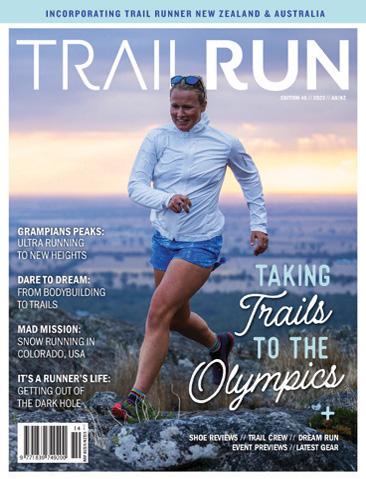








Are you ready to hit the trails with the ultimate running shoes? Subscribe to Trail Run Magazine or renew your subscription now for your chance to win a pair of Brooks Caldera 7 (RRP$269.95) trail-running shoes! With premium cushioning and dynamic durability, the Caldera 7 ensures a stable ride on any terrain. Gear up for your next adventure on the trails! When You Subscribe to Trail Run Magazine*
WHY SUBSCRIBE? ✓ WIN A GREAT PRIZE ✓ GREAT GIFT IDEA FOR ALL RUNNING LOVERS ✓ FREE DELIVERY TO YOUR DOOR FOR EVERY ISSUE ✓ SAVE UP TO $50 WHEN BUYING A SUBSCRIPTION UPFRONT ✓ GET THE MAG BEFORE IT HITS THE NEWSSTAND ✓ SUBSCRIPTIONS SUPPORT THE CREATIVES ON OUR PAGES TO KEEP SHARING THEIR STORIES- THAT'S SOMETHING TO FEEL GOOD ABOUT!
• New TPEE air mesh material is durable, lightweight and breathable.
• TrailTack Green outsole provides sticky traction on wet and dry surfaces and is made of at least 25% recycled material. WIN




AUSTRALIAN MADE. AUSTRALIAN PRINTED. AUSTRALIAN OWNED.
COVER: Lucy Butler from Geelong, Victoria climbs a rocky section of Mt Hallowell on the Bibbulmun Track during the 2024 Delirious W.E.S.T 100 and 200 miler.
IMAGE: Astrid Volzke
THIS SHOT: A marathon runner racing on Wainui Beach at the 13-15km mark during the 2024 First Light Marathon in Tairawhiti Gisborne, Aotearoa, New Zealand.
IMAGE: Damon Meade Studios
VISIT US ONLINE trailrunmag.com facebook.com/trailrunmag twitter.com/trailrunmag instagram.com/trailrunmag
EDITOR: Kate Dzienis
SUBEDITOR: Kathleen Southway
DESIGN: Marine Raynard
LEGENDARY TRM WRITERS: Ash Daniels, Brad Dixon, Kate Dzienis, Sophie Geraghty, Hilary McAllister, Nathan McNeil, Alexis Oosterhoff, Samantha Turnbull, Jo Wood
AWESOME CONTRIBUTORS: Lucy Bartholomew, Rachel Bridgewater, Simon Buckley, David Byrne, Callan Gates, Catherine Gaue, Joseph Nunn, Simon Poli
EPIC PHOTOGRAPHERS: Majell Backhausen, Lucy Bartholomew, Simon Buckley, Damon Meade Studios, Thiago Diz/RacingThePlanet, Justin Dyer, Dan Ferris, Noreen Krusel, Duncan Maughan, Nathan McNeil, Rhys Newsome, Joseph Nunn, Roberto Olivares, Joanne Oosterhoff, Jesse Peters, Photos4sale, Suzanne Poli, Sportograf, The Eventurers (Ian and Velta Fellowes), Artem Varnitsin, Astrid Volzke, Ben Wallbank, Mark Watson
TRAIL RUN IS PUBLISHED QUARTERLY
ADVERTISING
Teah Westerman
Email: teah@adventureentertainment.com
Phone: +61 468 461 681
SUBSCRIPTIONS & ENQUIRIES
Email: magazines@adventureentertainment.com
Phone: (02) 8227 6486
PO Box 161, Hornsby, NSW 1630 trailrunmag.com/subs
EDITORIAL
Trail Run Mag
Email: kate@trailrunmag.com
PUBLISHER
Adventure Entertainment
ABN 79 612 294 569
ACKNOWLEDGEMENT OF COUNTRY


Trail Running acknowledges and shows respect for the Traditional Custodians of Australia and Aotearoa, and their Elders, past, present and emerging.
DISCLAIMER
Trail running and other activities described in this magazine can carry significant risk of injury or Death, especially if you are unfit. Undertake any trail running or other outdoors activity only with proper instruction, supervision, equipment and training. The publisher and its servants and agents have taken all reasonable care to ensure the accuracy of the information contained in this publication and the expertise of its writers. Any reader attempting any of the activities described in this publication does so at their own risk. Neither the publisher nor any of its servants or agents will be held liable for any loss or injury or damage resulting from any attempt to perform any of the activities described in this publication, nor be responsible for any person/s becoming lost when following any of the guides or maps contained herewith. All descriptive and visual directions are a general guide only and not to be used as a sole source of information for navigation. Happy trails.








It’s the simple joy that never gets old Cold, refreshing drinks, when you ’ re on the go. For over a century, people have loved Thermos products because they make everyday life better, every time. Hot stays hot. Cold stays cold The little things go a long way. So do we.



THERMOS. TRUSTED SINCE 1904 18 HOURS

There’s a shift in the universe sometimes when significant ‘events’ take place in our lives.
And sometimes, those shifts are felt across entire communities where hundreds of people suddenly become one.
In the grand scheme of things, I’m not talking about race ‘events’; in this instance, I’m bringing up the things that happen to us, to the people around us, which significantly alter the trajectory of the direction we once had planned out. As we grow older year after year, we learn to accept there are certain parts of our lives where, as the cliché goes, one door closes and another door opens – either one at a time, or what seems like 50 all at once.
That type of universal shift happened in mid-2022 when WA trail runner Peter Shinnick was devastatingly diagnosed with pancreatic cancer following a bout of illness after deciding to withdraw midway from a local race.
What followed was a community banding together, not only to pool funds in a bid to help his family pay bills while Pete went through various treatments, but for over a year, his running tribe and those beyond did all they could to help ease the burden.
We saw Pete take to travelling overseas for revolutionary and innovative surgeries, while back home the WA running community rallied together to fundraise by way of personally organised runs and the like.
That same year, in 2022, Pete’s mate Jeff Hansen, a well-known WA trail runner and race organiser, was also diagnosed with cancer. This time, leukaemia. Sadly, and to the heartbreak of many, his battle was brief, and the land of the wild west lost Jeff suddenly and quickly. His legacy lives on though, when during the Delirious W.E.S.T 200 miler in early February 2023, Jeff’s trail shoes, bib and spot tracker were officially registered into the event, each runner picking up the pack on the trail to run with it for some kilometres.
It was the event he wanted to finish.
The last person to run with Jeff’s pack, across the finish line, was his wife Jodie, and there is now a memorial plaque placed by that finish line for him to watch over future races.
Earlier this year, Pete lost his fight.
Jeff and Pete, mates now running the trails together, left behind legacies so paramount, it’s at times hard to put into words. In the WA
running community, they were the blokes, the runners who made everyone feel like a part of their tribe, who welcomed outsiders in and made friends everywhere they went.
This edition of Trail Run Mag is dedicated to Pete, to Jeff, and to everyone who crossed their paths. It’s dedicated to the runners who dream as big as Mt Everest and push through the hardest barriers of physical, mental and emotional complexity. It’s dedicated to the runners who face their demons every day, morning and night, but by the grace of strength get through the hard hours. It’s dedicated to the runners who want nothing more than to live the best life they can live, for their families, for their mates and for the sake of their own health and happiness.
This edition of Trail Run Mag, and all editions of Trail Run Mag, is dedicated to you. The trail runner with grit, with conviction, tenacity, and with fortitude.
 KATE DZIENIS, TRM EDITOR
KATE DZIENIS, TRM EDITOR

















WORDS: KATE DZIENIS IMAGES: DAMON MEADE STUDIOS






Immerse yourself in the beauty of spectacular beaches, immaculate coastal views and challenging grassy hills, where you can combine a majestic marathon with a true cultural experience in Tairāwhiti Gisborne, New Zealand –the First Light Marathon.
Both marathon and half marathon runners face a series of short, steep hills on a combination of charming single-track trails, roads and off-road surfaces with stunning views. Half marathoners will loop through the hills back toward the city, while marathoners head out to the spectacular Wainui Beach for roughly 2km, running along its sparkling waves, before racing to the finish line.
Sure, the hills can be slightly unforgiving with an elevation of up to 1300m, but with views of the Pacific Ocean in all their splendour once you get to the top, you kind of forget the hard slog you’ve just made your body go through.
And what the First Light Marathon is named after, is what you’ll want to be a special part of - Tairāwhiti Gisborne is widely known by people all over the globe for being the first city in the world to see the sun rise each day. Water stations are located every 4km with refreshing drinks, energy gels and snacks. In 2024, a disco ball even welcomed tired runners at the top!
With a wide variety of track types including boardwalks, rail tracks, roads and bush trails with cattle infested paddocks, anyone signed up for the event will find themselves falling head over heels for the landscape and the community of runners surrounding them.
How can you not add First Light Marathon on your bucket list?
Host:Albatros Adventure Marathons
Location:Tairāwhiti Gisborne, Aotearoa, New Zealand
Date: 25 January 2025
Info: first-light-marathon.com

Artificial Intelligence (AI) has arrived with a bang, along with the excitement and discussions of a new technology, which can revolutionise entire industries.
The coaching of athletes for trail and ultra running is not immune from this! So how well can AI be used for coaching as well as planning your training plan and racing? Well, first we’ll look at the quality of output from AI in generating a training plan for runners from a recent study.
We already know that to be successful in trail running means having a wellcrafted training plan. Unfortunately, many runners, especially beginners, might struggle with designing effective plans, may not know how to or may be reluctant to use a coach.
AI could offer some solutions here by providing tailored training plans on a large scale. AI software ChatGPT has gained attention for its ability to engage in natural conversations and has already reached millions of users since its release. New runners without access to a coach, or unsure of how to train for a race, may jump on ChatGPT to get answers and a plan however it’s unclear if the training plans generated by ChatGPT align with current scientific evidence and coaching best practices, or if they individualise the plans to the runner, based on the information provided. The question you need to ask yourself is, are you getting the best plan for you?
A recent study was conducted to evaluate the quality of ChatGPTgenerated running training plans and explore any differences, based on the input information provided by the runner.
To assess three training plans created by ChatGPT, 10 experienced coaches were asked to rate the AI-generated plans on a scale of 1 to 5. Each coach had a masters degree in sports science and at least five years of experience coaching athletes at a high level.
In other words, they knew what they were doing.
When people talk to ChatGPT about their running, they’ll give varying amounts of info. The study used three questions to fit different levels of training knowledge, from a very simple ‘Please provide me with a running training plan for the next six weeks,’ to a more detailed question, with other information relating to the runner. Some runners might have asked simple questions, while others more experienced, could provide further details. This study imagined a 20-year-old runner using ChatGPT to plan their runs.
To enhance ChatGPT’s responses to the training plan inquiries, the researchers included check-backs in the interaction process. These checkbacks were tailored to predict the questions a runner might ask when using ChatGPT for designing their training plans. For example, the study provided multiple check-backs for the more detailed third question, to refine the training plan further and a better response and none for the first, very simple question above.
The third question, which had the most detailed input, performed significantly better than the simple question, which had the least detail. No real surprise there. However, even the most detailed plan received only neutral ratings from the experienced coaches on some aspects, suggesting AI has a lot of room for improvement if it wants to become a coach.
The quality of the plan depended on the level of detail provided by the runner. In someone new to running, they may lack the ability or knowledge on what questions to ask. ChatGPT didn’t ask follow-up questions like a coach would, leading to less tailored plans and potential risks, especially for new runners.
As a coach, when building a training plan, I consider several factors. These factors can vary based on who you are training (current fitness level, health, training history and age), the specific demands of the race, and how long there is to train.
More importantly, even the best-performing AI-generated training program included suggestions that were not rated best practices and lacked evidence-informed planning. The conclusion of the researchers was they could not recommend using AI to generate training plans in practice for runners.
The Human Coach
While AI presents exciting possibilities in the realm of coaching, it’s essential to recognise the irreplaceable value of human coaches. Running coaching extends far beyond drafting training plans. It encompasses a complete approach to runners’ development and performance. Communication and trust are at the core of the relationship, something you’ll never get from a computer.
From personalised guidance to mental preparation, race plans and ongoing support and accountability, human coaches offer a greater depth of ability and tailored help for you that AI currently cannot replicate or match. Next time you’re seeking guidance for your training and plans, consider reaching out to a real human coach. We’re not only as approachable as machines, but also bring a wealth of knowledge and personalised attention to your running journey.

INSIDER KNOWLEDGE: Ash Daniels is a Level-3 Athletics Australia Performance Development coach at Journey2Ultra coaching, where he specialises in trail and ultra running. He coaches runners of all abilities and distances, believing everyone is a runner; just that some of us need a bit more help in getting going. Ash can be found at journey2ultra.com.au


In the realm of distance running, the pursuit of personal bests doesn’t have to fade as the years advance.
Dan King, a masterful American runner in the 60-64 age bracket, exemplifies this with his astonishing trio of records achieved in 2020 on December 11. In a single day, King clocked a 4:52 mile (then a world record), a 9:58 3000m (American record) and a 16:48 5000m (then American record), setting a new standard for runners in his age group and offering inspiration for athletes everywhere.
King’s approach to training, which he dubs ‘Easy Speed’ has garnered attention not only for its efficacy but also for its ability to minimise injury risk while promoting impressive performances. King runs track, and cross country, but I believe trail runners will also benefit from this unique way to blend speed work into the training week.
This article delves into the core of King’s speed training regimen and shares his supplemental tips that promise to benefit any runner, regardless of age, type of running, or experience level.
My coached athletes complete some form of speed work all throughout the year. There may be less of it with less intensity, but speed work is useful for technique, and keeps the system injury resilient with force through the muscle tendon units and ligaments.
King’s base training incorporates key Easy Speed sessions, consisting of 6-8 x 1km repeats at marathon to half-marathon pace, interspersed with 400-600m of easy recovery jogging. These sessions are part of a weekly routine that also includes a mix of other runs, tailored to the upcoming races, and cross-training activities such as cycling, walking, swimming and strength training. This varied approach helps maintain overall cardiovascular fitness without overtaxing the body during the off season.
Using the Easy Speed method trail runners could then have more room in the week to fit in specific gym strength work as the controlled speed will not require a 36hr buffer at either end of the session.
During his racing season, King adjusts his Easy Speed sessions to include slightly faster, shorter intervals: examples of this is 6-10 x 400m at 10km pace with 400m recovery, and up to 14 x 200m at 3km pace with 200m recovery. He also introduces a 10-second walk before and after each repetition to optimise recovery.
Many of my athletes have an unhelpful belief that walking is not helpful during running training. King shows that walking before and after these run reps maximises recovery and allows the athlete to get more out of the work. This method allows him to work on racespecific speed in a controlled manner, demonstrating that record age group times are achievable without pushing the body into the danger zone of anaerobic overload and excessive lactate build-up. As trail runners require the mixture of strength and speed endurance, this type

of controlled effort will give maximum benefit with minimal injury risk during the pre and racing season.
Uphill Workouts: Once a week, King tackles uphill sessions to bolster calf strength and reduce ground impact forces. Depending on the season, he alternates between longer, steady climbs and shorter, high-intensity hill reps. It’s a potent tool for any runner, especially trail runners looking to build power and endurance efficiently.
Emphasis on Recovery: As athletes age, recovery becomes paramount. The body’s ability to rebound from stress diminishes over time, necessitating greater focus on rest and recovery. King prioritises sleep and nutrition to supercharge his recovery process and maximise performance gains. Recovery tools are under-utilised by every athlete I coach. The younger runners still need to incorporate recovery into the week to maximise performance gains and develop lifelong habits.
Setting Ambitious Goals: King believes in the power of setting lofty goals. Even if the ultimate objective isn’t reached, the pursuit itself is transformative, guiding daily habits and maintaining a clear trajectory for personal development and athletic progress. Taking the longerterm view, and not putting extra pressure on yourself is so important in this ‘stay hard’ Goggins culture.
Listening to the body in the now while striving towards those big far off goals is so important for consistent growth and performance gains.
The Easy Speed framework is not just for elite athletes or record chasers; it’s a versatile training philosophy that caters to runners at every level. Whether you’re dipping your toes into the world of speedwork or you’re a seasoned trail runner seeking a safer alternative to traditional high-intensity training, Easy Speed offers a sustainable path to improvement. By balancing structured workouts with adequate recovery and strategic goal-setting, runners will love this approach to getting speed work incorporated in the training week.
INSIDER KNOWLEDGE: Brad Dixon is a sports physio, coach and wellness evangelist at EVERFIT Physio & Coaching. He’s written a book titled Holistic Human, and believes the power is in our daily habits. Find him at everfit.co.nz or through his socials @everfitcoach.


My first 100km event was the Surf Coast Century, on my home trails of Wadawurrung Country along Victoria’s coastline.
For the first 20km, I was surrounded by other runners before the field spaced out, and I had the beautiful bush all to myself. Eavesdropping on the conversations of my fellow runners provided good entertainment, distracting me from the existential questions of ‘Why did I sign up for this?!’ and ‘How am I going to survive 80 more kilometres?!’
I was very green to the trail and ultra scene and was an eager student of the sport. The chatter between two male runners drifted on the sea breeze as they spoke about gaining stones and points so they could, eventually – hopefully – maybe – get a ballot for an international race with names like ‘Western States’ and ‘UTMB’, which at the time were foreign to me.
The thought of tackling a 100km run to get something elusive as a stone or points bamboozled me. I was there to prove something to myself, to push my limits and to accomplish something so few do. I couldn’t imagine the experience not focusing on the beautiful landscapes, uplifting atmosphere, sweaty hugs with the support crew and post-run pizza and beer. I was introduced to another side of ultra running, and I was intrigued.
Fast forward four years, and the trail and ultra world has become quite the beast.
No longer is it a sport for the rag-tag weirdos who think a fun day out is running for 5+ hours along a barely-there trail. And whilst the big fish in a relatively small pond continue to grow, there are still plenty of little fish out there, increasingly needing help to survive in a more congested body of water.
However, choosing smaller, grassroots and community-led events has been growing momentum, from the world’s best athletes to stragglers like myself.
Many people’s paths to trail and ultra running came from small community groups that supported and encouraged green runners like myself to push themselves further, gain confidence and utilise events as opportunities to socialise and explore new trails. With more big events with big budgets on the calendar, are the grassroots events struggling to break even?
Like in everyday life, we vote with our money. Every decision we make is an investment, from where we buy our groceries, who we bank with, which café we frequent and what brand of shoes we swear by. The races we enter are no different. With only so many days in the year, so much disposable income to spend on event fees, and kilometres in the legs, choosing your races carefully is essential.
Recently, other factors are coming into the equation too. With climate change hot on the heels of the summer racing schedule, the window for exploring alpine environments is increasingly

challenging to predict due to fires, floods, winds and storms.
This has meant the summer period is increasingly filled with events, with some legacy events feeling forced to change race dates due to conflicting schedules.
Whilst many of us feel validated by the growing popularity of trail running, we can also feel excited and concerned about the future of this incredible sport. Many runners feel allegiance to specific events and return year after year, while others enjoy the experience of travelling somewhere new to support a smaller event.
And whilst first-timers might feel more comfortable tackling the trails alongside thousands of other runners, there will always be people like me who prefer to find space from the pack and soak up the beautiful quiet of nature amongst the adrenaline of race day.
Regardless of your preference, consider where you invest your race entry fee because on the other side of that investment is a team working away for months, if not years, to bring you the most memorable, safe and fun event possible.
And without these dedicated race directors, we wouldn’t have the opportunity to head out and explore the incredible wild places we have on offer or push ourselves out of our comfort zone in a way that is safe and accessible.
INSIDER KNOWLEDGE: Hilary McAllister is an experienced yet accident-prone outdoors woman, often unmotivated ultra runner, serial nomad, political wannabe and environmental advocate. She combines her passion for exploration and environmental activism through her work at For Wild Places, a charity she co-founded that combines trail running and sports activism.



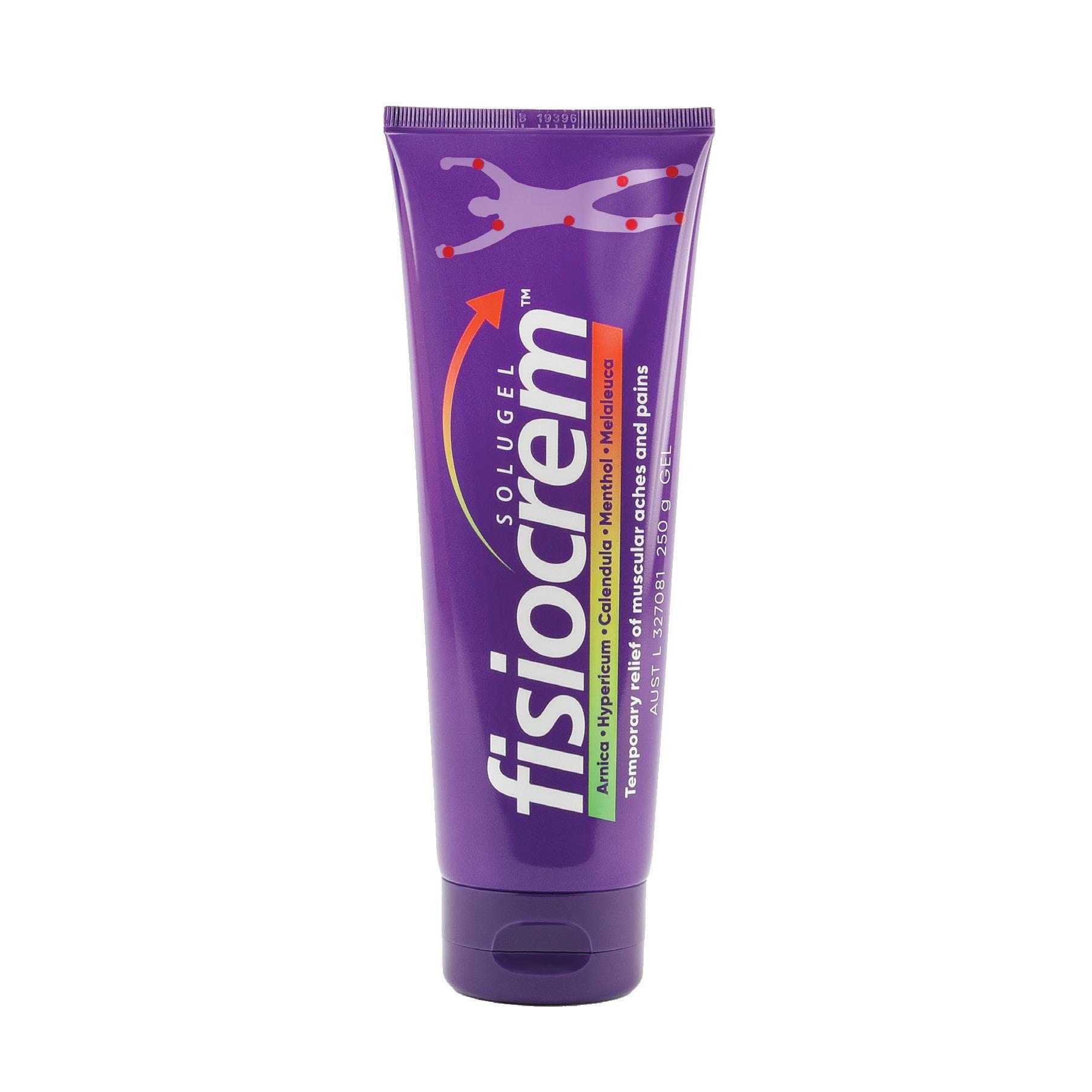
ANSWERED BY: SIMON POLI IMAGES: SUPPLIED
How did your group begin?
My mate Pete Shinnick and I had caught up a few times after I got back from the UK in early 2020 and decided we wanted to replicate what we did in Kalgoorlie with Kal Pub Runs but in Perth, and with a bigger focus on the social side, encouraging newbies to join and start getting active.
We had decided on a home base at Seasonal Brewery as we were enjoying their Porter at the time and it was also a great central venue. In reality Pete and I wanted to enjoy a guilt free Porter each week and this seemed like a good excuse. After the first few weeks we did start getting some people just starting out in running and looking at getting active.
Over the years we’ve had people who used it as their only run for the week and then gone on to run marathons and trail ultras however the emphasis has always been on a bit of exercise and then hanging out, and partaking in a ‘Shinnick Selfie’ at the start of every run.
Where does your group run mostly?
As we meet at a brewery in Maylands which is on the outskirts of the Perth CBD, we mainly do our runs down by the Swan River, or if my brother Felix is leading it, it could end up through people’s backyards.
We have done a run to bouldering, where the group ran to a climbing centre, climbed for an hour then ran back, something that we want to explore more of in the future. We also have a couple of annual events – a Christmas Beer Mile and windup, and also a Brewery Marathon in the Swan Valley.
What is your favourite local trail and why?
I posed this question to the group and if I tallied the answer I think Walyunga/Bells Rapids in the north-eastern suburbs of Perth would come out on top and justifiably as these are some of the most amazing trails to just explore without fear of getting lost. However we had such a vast array of different answers, from Kitty’s Gorge, Eagle View, the Bib and Snake Charmer, which are all amazing trails. Because everyone has a favourite within the group they all love sharing stories of runs on them which encourages the rest of us to go exploring our amazing bush.My personal favourite is W.N.M. - those that know, know.
What single piece of advice would you give a newbie joining your group?
I think members Marnie and Rebecca summed this up the best: Just come along even if you don’t feel like running; it’s about getting out of the house and connecting with others.



If your trail group was an animal, what would it be and why?
Firstly, a kookaburra because they are merry, merry kings of the bush and always have time for a laugh, and secondly a hyena because we run/ walk, eat and laugh (and at times scavenge the odd chippy).
Your group can choose any three people on Earth, living or dead, to come join one of your runs. Who are they and why them?
I checked in with the group on this one as well and two people popped up in most answers. Pete Shinnick, one of the founders of Pub Runners and all around great bloke, who sadly lost his fight with cancer earlier this year.
Jeff Hansen who also lost a very brief fight with cancer almost two years ago. These two guys left such an impression on pretty much everyone in the community in one way or another and I think we would all do anything to get one last run in with them.
As for a third, personally I would love for Kilian Jornet to join us, we could learn a lot from him.
How have you seen participation in your group change people and lives?
It was hard for me to answer this one as I didn't want to speak for everyone, however my own view is similar to everyone else's; I’ve seen people go from just a run on a Monday night to marathons, and people at their darkest moments have the group rally around them and just be a friend to help them through.



The moment that really stood out about how this group has changed people’s lives was when Pete had almost passed and we put on an event because we wanted to celebrate his life. The turnout that night of not only regulars but runners and friends that hadn’t made it to any runs in the past, was so incredibly amazing. Every single person had a story to share and a tear to shed.
I think it has gone beyond what Pete and I had envisaged as a cheeky way to get a guilt free pint in each week to a unique community within several different running communities where people have found they can be themselves and know they have the support of everyone around them.
NAME:
Perth Pub Runners
BIRTHDAY:
20 July 2020
REGION: 481
MEMBERS: 70
AVERAGE RUNNERS AT EACH HOOK UP: 15-20
AVERAGE HOOK UPS EACH YEAR: 54
SHOES OWNED IN TOTAL: Way too many to count, I mean…I have about 16 myself…
UNOFFICIAL CLUBHOUSE: Seasonal Brewery, Maylands, WA



Compact, ultra-powerful at 1100 lumens, and rechargeable, the new SWIFT® RL is the only headlamp you’ll reach for on every run. Versatile by nature, REACTIVE LIGHTING® makes using the SWIFT® RL a convenient hands off experience, automatically adjusting brightness to your surroundings.
AU: 02 9966 9800 sales@spelean.com.au www.spelean.com.au

Nestled in the Grose Valley, 2 hours west of Sydney, deep in the world renowned Blue Mountains National Park are the courses for the mountain running icon of the Hounslow Classic.
This race made its debut back in 2015 and has featured many of the Country’s greatest runners, such as Beth Cardelli, Lucy Bartholomew, Scotty Hawker, Ben Duffus and many more. The trails in the Grose Valley have made headlines for their relentless character and spectacular beauty. Yet while Hounslow Classic has become known as a brutal course there is more to this race than blood, sweat and tears.
SingleTrack Events took over in 2023 to breathe new life into a dormant event since the floods, fires and pandemic that hit the community and landscape in 2020. Last year saw the birth of the new courses - the Hounslow 17k and the Hounslow Marathon. The Hounslow 17k, taking place on Sunday, offers a different product from the past courses, making it more approachable to the average trail runner. The lollipop course sees all the runners pass through the Grand Canyon Trail, a historic hiking trail dating back to 1907.
To get to the Grand Canyon from the start and finish line at Allview Escape, runners pass over the Cliff Top track, which in itself is a trail for pure running joy, with endless views of the sharp sandstone walls and jagged peaks that engulf the striking Grose Valley. While this course encourages runners of all types to test their mettle and dip a toe into the world of mountain running, it does still climb a total of 900m+ over the 17k, which certainly makes the finish line a warm welcoming sight and can bring a tear to the eye of those who have conquered the course and lived every part of the journey.
The Hounslow Marathon on paper is hard,
EVENT
Hounslow Classic
WHEN 6-8 September 2024
DISTANCE
Marathon, 17k, Hounslow Monster (17k + 43k) and Kids Race
WHERE Allview Escape, Hat Hill Rd, Blackheath, Blue Mountains
MORE hounslowclassic.com.au

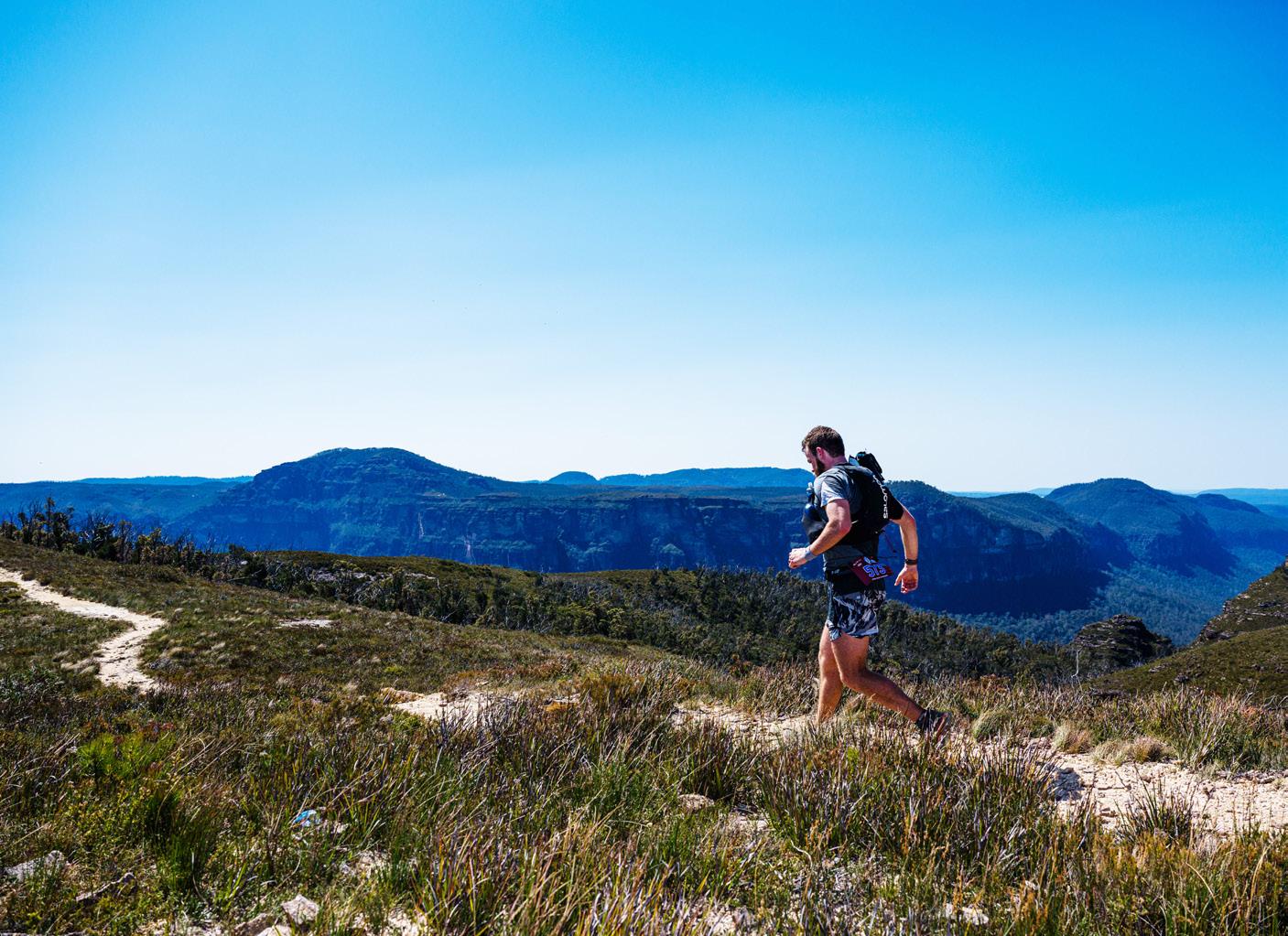
with 43km and 2500m+ of climbing, but in practice, those numbers don’t add up to the demands of this course, which challenges any Marathon worldwide in its difficulty. Maybe it is the way the course is structured, with the only flat section in the middle and very end of the race and the hardest climbs of the course stacked into the final 20km. Maybe it is the technicality of the climbs and descents, or maybe it’s the breathtaking scenery that all adds up to the course demanding all of one’s energy and focus to succeed.
Taking place on Saturday, the Marathon follows the same route as the Hounslow 17k back to Allview Escape, where there is an aid station and a chance for runners to reset before embarking on the almighty out and back to the Pinnacles Car Park via Perrys Lookdown and Lockleys Pylon. This second half of the course is where it gets real, particularly once runners drop deep into the Grose Valley Wilderness. Heading down to the Blue Gum Forest via Perrys Lookdown is a
daunting descent knowing every step will have to be re-tracked on the return journey. The Giant ancient protected blue gums are a sight to behold, as is the craggy peak, soaring high above them in the distance, which happens to be the next climb. This exposed climb is dry, rocky and technical. But the payoff is big, with 360° views of the entire course and surrounds from Lockleys Pylon. The runnable singletrail to the aid station at the Pinnacles Car Park is a welcome respite, and the aid station encourages extended stays as runners tell stories and ready themselves for the true challenge of the Day, the return journey.
Of course, there is the option to race both Saturday and Sunday for those who long for pain and the title of Hounslow Monster. Another new offering in 2024 will be the Kids Race, a little intro to trail racing for the future of the sport.


CAPTURED THE MOST SCHMICK TRAIL, LANDSCAPE OR VIEW WHILE OUT FOR A RUN? TAG OUR SOCIALS HANDLE @TRAILRUNMAG ON INSTA.
A SKY OF GOLD NEVER GETS OLD Runners racing in the First Light Marathon across Tairāwhiti Gisborne, Aotearoa, New Zealand head east into the sunrise as they tackle the trail marathon, full of hills, coastal views…and an unbelievable dawn. Image: Damon Meade Studios

Professional Aussie athlete and trail runner Lucy Bartholomew gets some air whilst training at Sweetwater Trails in Tucson, Arizona (USA) in her lead up to the Black Canyon Ultras 100km, a point-to-point course along the world-class Black Canyon National Recreation Trail. Image:


The newest event to hit the calendar is the Ballarat Marathon, and it successfully took off on 27-28 April 2024 with options of a 1mi, 5km, 10km, Half and Full Marathon. At the helm of the event, and leading the charge in this epic shot, is the legendary Steve Monaghetti who co-designed each Ballarat Marathon course with Dave Cundy – the man who designed the Sydney Olympics Marathon.
SNOW CAPPED ADVENTURE
The North Face athlete Dave Byrne fastpacks the epic Run Everest Stage Race course. The event takes in the classic Everest Base Camp route from Jiri to EBC and back to Lukla through some of the most spectacular and rugged high alpine terrain on the planet.



ACCORDING TO 2022 STATISTICS FROM THE AUSTRALIAN SPORTS COMMISSION, ONLY 32% OF GIRLS AGED 15+ PLAY SPORT AT LEAST ONCE PER WEEK. THAT HURTS…THAT NUMBER REALLY HURTS WHEN YOU LOOK AT IT PROPERLY. SO NOW IS THE TIME TO EMPOWER THE NEXT GENERATION OF FEMALE ATHLETES TO DEVELOP A LOVE OF SPORT AND EXPERIENCE THE IMPORTANT HEALTH AND EDUCATION BENEFITS THROUGHOUT LIFE. MELBOURNE ULTRA RUNNER AND MOTHER DONNA URQUHART IS DOING JUST THAT, AND REVEALS TO EDITOR KATE DZIENIS JUST HOW AND WHY SHE SET A FREAKIN’ INCREDIBLE WORLD RECORD IN THE MOST FRIGID, FROSTY AND FEROCIOUS PART OF THE WORLD – ANTARCTICA.
ARTICLE BY KATE DZIENIS | PHOTOGRAPHY BY RHYS NEWSOMEOn 14 January, 2024
Donna Urquhart from Melbourne, Victoria crossed the finish line in Antarctica and set a new World Record for the longest run in a polar region, running an average of 50km per day over 28 days to reach 1,402km –a first for a female.
Woah, I hear you breathe.
Let’s put that into perspective, shall we? December and January temperatures in Antarctica are at their warmest, but that doesn’t mean a balmy 28-38°C. In fact, it generally gets up to only 0°C on a good day and the days rapidly get longer until eventually the sun doesn’t set at all. There is every chance it can get down to -60°C though, depending on how far into the continent you travel.
Donna has a strong background in ultras, having started long distance events back in 2013 with The North Face 50 and then moving on to events like Surf Coast Century 100, Run Larapinta Stage Race and Sri Chinmoy 24 Hour amongst others. For a long time now, she’s had the urge to go on a big adventure; to do something epic, daring and audacious that breaks new ground and takes her
out of her comfort zone. She needed, and wanted, to do something that helped her explore her physical and mental limits but never quite knew what that adventure looked like.
“2021 was different. It was during the pandemic and lock down in Melbourne. I was watching a podcast and Eric Phillips, an Australian polar explorer and guide, was talking about his experiences in Antarctica,” she says.
“I was captivated. The hair stood up on the back of my neck, and something deep inside stirred. I wondered, is it possible to run in Antarctica? And if so, how far? How far can we, as humans, run in the polar region?
“The ‘why’ developed because I wanted to find out what was possible – for me, for females, and for humans. I wanted to test limits and push barriers but over time, I realised I wanted this to be bigger than me and to be more than a record.
“Research shows only 32% of girls are still playing sport by the age of 15 and they stop playing because it can be stressful and they don’t feel confident. I wanted to use the WR attempt to launch our
mission – a mission to raise awareness and support for young girls in sport and provide them with the opportunity to love sport and find out what’s possible for them.”
Training for Antarctica was different to any other training Donna had done before. Preparations were taken very seriously given the location is the coldest, windiest and driest desert on earth with conditions predicted to be incredibly dangerous given every chance of hypothermia and frostbite.
There was no blueprint to work from with regards to training, and acclimatising to the cold wasn’t possible, so Donna had to rely on innovation and critical thinking, developing her own training regime by simulating cold temperatures in a freezer and running on a treadmill (inside said freezer) at -10°C for 3-4 hours at a time.
“It was a cold storage shipping container provided by Titan Containers,” she reveals.
“I also ran in a commercial wind tunnel at Denso to simulate 100km/h winds combined with subzero temperatures and
ran for hours on weekends on sand to mimic running on soft snow. I discovered that drink bottles freeze after 90 minutes in the freezer and if you take your gloves off for just a short time your hands can start to be incredibly painful, taking 1020 minutes to return to normal.
“The training I did in the refrigerated container and the wind tunnel was an important part of the reason I was able to achieve what I did. Whilst nothing can prepare you for the harsh environment of Antarctica, this preparation provided me with foundations to adapt once I arrived in a polar region.”
In the fortnight leading up to her flight out with husband and crew member Rhys Newsome, there were over 20 boxes of clothing, equipment and nutrition arriving on her doorstep on a constant basis. Leaving her son Maxi (11) behind for six weeks with family was the hardest part, knowing she was going to be away over Christmas and New Year’s, and on the one hand felt guilty. But Donna also believed that there were positives to the situation – special time with his grandparents who he dearly loves, time for him to develop independence, and showing him what is possible and how he too can follow his dreams.
Flying into Antartica was not without its problems though because getting there is always weather dependent due to landing on a blue ice runway – there is no airport.
“The night before our flight to Antarctica we received a message to say there was no confirmation of the flight the next day,” Donna recaps. “We knew what that meant. The weather wasn’t looking good. We had also heard that the weather in Antarctica so far this summer season had been unprecedented. Time was ticking for us – every day that went by was a day we weren’t running.
“We received a text the next morning to say the flight wouldn’t be leaving. We were crushed. We’d spent two years planning for this. We tried to focus on what we could control but then finally, we received the message to say our plane was leaving – while we had been delayed we were finally going to step foot in Antarctica!”
Once on land (or ice…or snow…), there was no time for acclimatisation. Donna began running the first day in between
several safety briefings with the Travel Safety, Medical and Communications Unit and looking back, she recalls how hard that first week was.
“I was trying to work out how to live in a camp in a polar region, how to run 50km per day, and how to process the goal I had set myself (1,300km in 30 days),” she says.
“I realised the enormity of what I had set myself and I felt quite overwhelmed. It was challenging to just start running each day; it would take up to 3 hours to get ready. You just can’t throw your shoes on and get out of the tent. It’s about systematically putting on the clothing and preparing the equipment from goggles, neck gaiter, beanie, gloves, multiple clothing layers including thermals, fleeces and soft shell jackets, skirt, shoes with or without spikes, watch, satellite communicator, sunscreen, anti-chafe, running pack and more. Then everything is spread around the camp – the toilets are 200 metres in one direction, the meal tent in another, the bathroom in another and the starting point yet another.
“Then there was information to process from a string of safety briefings on the first day. The instructions were – don’t go outside the flags as there are crevasses you can fall down and you won’t be coming out of; beware of the cold as you’re at danger of hypothermia, polar thigh and frostbite; always carry your radio and GPS communicator; and do not go out of camp without radioing in to Travel Safety. All very reasonable and incredibly important – but nonetheless it made it feel very real.
“Day 3 tested me like no other day. It was bitterly cold, a -20°C. The winds were strong at 60-80km/hr and I couldn’t see where I was running. The snow was thick and soft which meant I was slipping and falling; I was really scared and felt very vulnerable being out there on my own.
“I cried in the middle of the loop. I cried as I felt unsafe. I cried because Rhys had slipped and fallen on his shoulder – the shoulder he had operated on a few years ago. I cried again the next day as my son Maxi asked me when I was coming home. And it was only Day 4.”
During that first week, Donna’s knees ached and she taped them up, but that was the least of her worries. She had
developed a rash, which was the first sign of polar thigh – a condition which can potentially lead to massive welts requiring surgery. She was waking up with a swollen face, blowing up like a balloon while her lips had enlarged and her eyes had almost disappeared into their sockets.
At this point, she just wanted it all to stop.
“But then gradually, it happened. I adapted,” Donna explains.
“We adapted. We transformed. It was quite profound. I learnt how to dress for the cold and the wind and how to run on different surfaces. My knees started to settle and only hurt at the start of the day. I cut back on the fluid I was drinking and the swelling reduced. I spoke to Maxi each night and had fun and laughed at the different faces we could make on Messenger.
“I stopped thinking about 1300km and just focussed in on what I was doing in the moment or the next straight or the next loop. I cried and let the emotions out and felt much better for telling my crew how I felt. I leant on my brilliant crew of Rhys, Anthony and Tom – words can’t explain the support they provided. I couldn’t have done it without them.”
Donna’s mission began as a dream, a hope, when she asked herself what was possible for the human body. And when she crossed that finish line in midJanuary, she had achieved the first-ever Guinness World Record for the longest polar run by a female.
But while she may have finished this amazing adventure, Donna says this is just the beginning of her mission to
• Trail shoes with spikes to prevent sliding on slippery snow (Hoka Speedgoat 5 GTX spike)
• A sheewee – a device that allows females to pee in a bottle
• Snow goggles with a nose piece
• Sock and glove liners
• Merino wool underpants and bra
• An insulated bladder
• A pro-elite suit and sleeping bag made for Mt Everest and polar regions



Rhys Newsome: Donna’s husband, chief support crew, search and rescue operative
Anthony Lance: Physiotherapist, expedition manager
Annie Ting: Project manager
Tom Phillips: Founder of sponsor Superboost, ex-AFL footballer
address the alarming high dropout rate of young females in community sport.
“I have experienced the difference that sport can make in people’s lives,” she explains.
“It therefore alarms me that 50% of girls stop playing sport during adolescence (aged 15-19 years). This is despite the benefits of participating in sports being widely documented, with females playing sport having greater physical and mental health and stronger social bonds.
“The Run Antarctica team has
established a not for profit organisation, EmpowerHER Sport, with the aim of empowering young girls and women to love and discover what’s possible for them in sport, and breaking down the barriers that prevent them from participating.
“We are very excited about this next phase and encourage people to reach out to us and join us on this journey.”
@runantarctica
runantarctica.com
info@runantarctic.com

INSIDER KNOWLEDGE:
Kate Dzienis is your TRM editor, and thrives on the combination of trail running and good wholefoods. With the majority of her time spent editing, writing and corralling her children, when she does get out into the wilderness it’s all about mindful running and taking in the view from the top with a container of cold berries.

Push through your comfort zone comfortably in the ultra-cushioned, nitro-infused Caldera 7, designed to go the distance. And when things get rocky, you can keep cruising with the dynamic upper, built for a smooth ride that offers durability, protection, and breathability. Plus, the Caldera 7 is certified carbon neutral, so you can go hard with a lighter environmental impact.
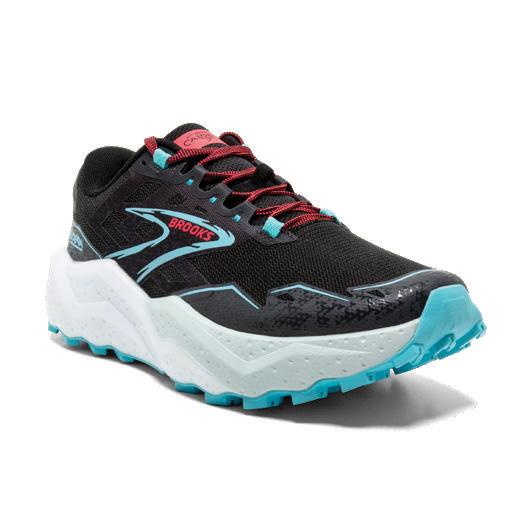
Shop now at brooksrunning.com.au


 Nitro-Infused Ultimate Cushion
Stable ride
Dynamic and durable upper
Nitro-Infused Ultimate Cushion
Stable ride
Dynamic and durable upper

IN EARLY FEBRUARY, THREE MATES SET OFF THROUGH THE BUSH AND FORESTS OF SOUTH WEST WESTERN AUSTRALIA IN MEMORY OF A RUNNING MATE. RUN THE TRAIN TO EASE THE PAIN, AS THEY CALLED IT, WAS TO REMIND ANYONE AND EVERYONE TO HAVE THEIR HEALTH CHECKS DONE, WHETHER IT BE A SKIN CHECK, BLOOD WORK, OR A GENERAL ONCE OVER. EDITOR KATE DZIENIS SPOKE WITH BROTHERS SIMON AND ANDREW ‘FELIX’ POLI WHO RAN WITH NICK SWALLOW TO FIND OUT WHAT RUN THE TRAIN TO EASE THE PAIN WAS ALL ABOUT.
It’s the middle of a Perth heat wave, and three blokes from the northern suburbs are pushing their way through a horde of rapacious, vulgar flies.
The sun bearing down on them, the humidity like being in a sauna that won’t turn off, brothers Simon and Andrew Poli together with mate Nick Swallow, trudge through what feels like an endless temperature spike with killer flies at every piece of exposed skin.
They started a couple days earlier, driving about 170km south from Perth along the coast to the City of Bunbury suburb Picton, where they took their first steps along the old junction of the Bunbury train line.
The aim was to run along the Picton to Northcliffe railway line, which was constructed in the late 1880s and where specific sections from one point to another were officially opened and operational throughout the 1890s.
For Simon, Andrew and Nick the plan was to take the railway and trails alongside it for about four days, totalling 205km, with only one thing on their mind spurring
them on – their late friend Peter Shinnick.
Originally, the hype to do this route came some years back when Andrew (aka Felix) realised that while it was mostly being maintained, the railway south of Bunbury hadn’t been in use (except for the Pemberton tram) since the early 2000s. Andrew had been eyeing off the possibility of doing the run, mapping out all the old lines but not sure exactly where all the old stations were.
“Looking at the line, I figured I could run the length of it with convenient stops along the way,” he explains.
“On the way back from doing the Delirious WEST 200 miler event a couple years ago, I stopped to have a look at the line and realised that with it being overgrown, it would take at least one full day to get from Pemberton to Northcliffe. With that in mind, I revised the 3-day plan to a 4-day one.
“Then last year, Simon floated the idea of running the railway before his Delirious as a fundraiser for Pete, who was still with us at the time, but I wasn’t going to be running any milers in 2024 so for
me personally, I was just going to do the railway adventure while Simon and Nick trained for both the railway run and a 200 miler.”
The plan was to run the railway line in four days, take three days to re-set, and then Simon and Nick to tackle the Delirious WEST 200 miler. So the three mates packed up what little they needed (plus a tiny bit more for the miler) and got in the car with Andrew’s wife Suzy and Simon’s partner Peta Moore. With a twohour journey ahead of them, it was a great chance to reminisce about close friend Peter, who was an ultra runner but in early January 2024 lost his battle to pancreatic cancer. Everyone agreed that this run, which they named Run The Train To Ease The Pain, would no longer be a fundraiser. It would be done in memory of Pete, and to remind the wider community of getting health check-ups on a regular basis to catch any illnesses, diseases or ailments early. It was agreed that Suzy and Peta, as support crew, would post on social media and provide updates as they met the boys at certain points along the way, as well as reminders to keep health at check.

The first day was planned from Picton to Balingup (~70km), day two was Balingup to Yornup (~50km), then Manjimup to Pemberton (~35km) and finally Pemberton to Northcliffe (~30km).
“Starting the run wasn’t something I really had to think about,” Andrew says.
“I was focused on the railway and figuring out how best to follow it. Navigating was easy, it was just whether to run on, beside or nearby; I was kind of the designated navigator, so each day I started out focused on the railway line and any challenges that might have arisen.”
On the first day, Andrew started to crash early. He’d forgotten his ADHD meds (taking only three tablets with him when he needed four) resulting in him being unable to keep up and both Simon and Nick revealing they could see him visibly ‘going downhill’ at the halfway point. “When we got to Donnybrook, I laid down in the shade and simply fell asleep,” he reveals.
“A single tablet just didn’t get me beyond 30-odd kilometres. The second day was much better, I took the remaining two tablets and topped up with an energy drink throughout the course of the day.”
The day landed Andrew at the nearby hospital, where every effort was made to ensure he received a new batch of medication, seeing as a round-trip of four hours for either Suzy or Peta wasn’t feasible. In the end, the amazing doctors ensured Andrew was taken care of so he


could resume his railway adventures.
For the first two days, Perth was experiencing a heat wave – suburban temps had reached 44°C in some areas, and despite being two hours south of the CBD, the humidity had made its way along the southern parts of the state and everyone was feeling it.
“Oh boy, those first two days were damn hot, and there were quite a few
really exposed areas that we had to run through,” Andrew recalls.
“I made sure Suzy and Peta picked up bags of ice for us, and instead of water we topped up our bladders with ice each time they met up with us. This kept our core temps down and was refreshingly cold, both to drink and to spray on our faces. We also ended up wrapping ice in cooling towels to place around our necks.”




Many people think it’s the trains Andrew loves, but that’s not the case.
“In fact, it’s the old infrastructure,” he says.
“From dams to mines, to contour channels and pipes, I love seeing all the ways that people in the past dealt with the challenges, and also how so much of our history is, in many ways, destructive as much as it is constructive.”
Simon, who was attaching his 200 miler to the back of Run The Train, says it was simply great to get started and see trails he’d never run on before.
“Nowadays I’m looking to get something more out of my runs and races, not just a medal at the end of it,” he explains.
“So for me it’s all about the experience and asking myself, what else can I do to bring even more excitement to the miler? And the railway line was just the perfect idea… four days of that, a two-day break, and then Delirious WEST from Northcliffe to Albany.”
“The weather took its toll on all of us, but Suzy and Peta were amazing at helping us get what we needed to refuel properly, and along the way on the first day we had
friend Matt Salinovich join us for about 16km, to Balingup, and I remember that even during the night the temp didn’t get under 40 – well, at least it certainly seemed like it didn’t.
“To be fair, none of us looked at the weather forecasts in the days leading up to it (laughs) so we learnt a lesson there.”
By the third day, the heat had dropped somewhat to the low-mid 30s, and with milder weather on day four – out came the marsh flies.
“It was a bit of a slog on that last day with the flies and the overgrown trails,” Simon recaps.
“But what I absolutely loved was that by then, the environment had changed from harsh bush to real beautiful forest, and the old bridges falling apart were awesome. From Manjimup to Pemberton, the giant trees were spectacular and the whole experience of that section was so surreal, it was perfect.
“Having Matt come along to run with us, the Manjimup parkrun crew spurring us on, and old mates putting us up in their homes for the night really hit home the level of community we are in when it
comes to trail running.
“We are all so glad we did this, it was such an experience to see these parts of WA and to do it with the people closest to us. To do it in Pete’s honour, and hopefully get at least one person making an appointment for a skin cancer check, or any health check for that matter, makes it so worthwhile.”
“This is something that many of us are a bit slack about. We tend to think of ourselves as fairly healthy and don’t like to bother others with what we think are the ‘little’ things. We have to take the time to get check-ups no matter how uncomfortable the thought of it is. Especially as I’ve hit 50 and all the risk factors jump up a few levels,”
– Andrew ‘Felix’ Poli





SCOTTY HAWKER’S RUNNING RESEMBLES THE ELEVATION PROFILE OF A MOUNTAINOUS ULTRA RACE WITH ITS PEAKS AND TROUGHS, BUT A RECENT FORAY INTO THE WORLD OF MULTI-DAY EVENTS HELPED THE KIWI ATHLETE REMEMBER WHY HE LOVES THE ULTRA RUNNING COMMUNITY SO MUCH. SAMANTHA TURNBULL SITS DOWN WITH SCOTTY TO GET ALL THE DETAILS, AND AN INSIGHT INTO THE FORMAT.
ARTICLE BY SAMANTHA TURNBULL | PHOTOGRAPHY BY THIAGO DIZ/RACINGTHEPLANETScotty Hawker is no stranger to prestigious podiums. Among his many achievements, the Christchurch runner, now 37, placed third at France’s UltraTrail du Mont Blanc back in 2019.
“That was the biggest one where I felt like I’d cracked it,” he says.
“You just hope for those days where the
stars align and you feel good.”
In 2021 he placed second in the 100km version of the event, the CCC (Cormayeur, Champex, Chamonix) and in 2023 he returned to the hallowed European Alps for another crack at the 171km. Scotty was in 8th place with 10km to go when his body shut down.
“I heard from the support crew that 5th and 6th place were a couple of minutes ahead and as I caught up to the guy in 7th place I was feeling so good, I made a bit of a surge and dropped him,” he says.
“But I think in hindsight, that surge…I got a bit too carried away, and with the heat I found myself feeling pretty dehydrated.

I’ve never had a race where I’ve derailed so quickly.”
Scotty sat down on the side of the trail to recompose himself as runners passed by.
“I drank the rest of my water, had a gel, and just told myself to ‘get moving as best you can,’” he says.
“Sometimes the only way out is to drag yourself through.”
Scotty willed himself to the UTMB finish line where he placed 15th, saying the result was hard to swallow, but after years of experience he is learning to cope better with the ups and downs of racing, and life, in general.
“To be honest my whole career has been up and down, whether it be through injury, or a few years ago I went through a separation with my ex-wife,” he says.
“One thing affects the other, and any good result I’ve had usually comes off the back of wanting to throw it all in and things not working out. I think that’s the nature of the sport in a sense, because you can’t expect to run ultra marathons without facing adversity.”
Despite his disappointing performance at UTMB, three weeks later he flew to Chile for his first attempt at a multi-day ultra: the 250km six-stage Atacama Crossing hosted by RacingThePlanet.
“A week after UTMB I switched focus to Atacama and I thought ‘holy heck, what have I gotten myself into, maybe I’ve bitten off a wee bit much’,” he reveals.
“Then as it got closer, I wasn’t poppy and fresh like I’d normally be, but I did start to feel kind of reasonable.”
RacingThePlanet events require runners to carry their week’s worth of gear throughout the entirety of the race –including sleeping bags, food and clothing – and Scotty admits he probably should’ve practised with his loaded, bigger pack before the actual event.
“I did one 20-minute run and got a sore


back and then a week later I did a 15km run with it and it flared up again, but I had two weeks until the race so I just crossed my fingers and didn’t run with it again until the race,” he admits.
“Luckily I didn’t have too many issues with it in the actual event.”
Scotty explains that meeting his fellow racers, many of whom were experienced multi-day runners, also made him realise he was a novice in terms of gear and what he needed to take with him.
“There were people tipping their dehydrated meals into snaplock bags to make them lighter…I was mind-blown
that people were going to these extremes, and I thought I was a gear nerd before that,” he laughs.
Scotty says the next challenge was the landscape of Atacama – a desert environment unlike anything he’d ever experienced before.
“To sum it up in one word it would be ‘brutal’,” he says.
“The Atacama desert was sometimes really rocky, then there were canyons, river crossings and sand dunes.
“There were the infamous salt flats, which was like running through broken glass, and the broccoli trees which are gnarly
bushes that you’re sometimes forced to run on top of…the spines of the trees would go through your shoes and gaiters.”
He generally finished each stage before the heat of the day was at its worst, except for the ‘long march’ which was a 70km section in searing conditions.
“You felt like your eyeballs were on fire, like someone had a cigarette lighter under your nose,” he says.
“I was glad I didn’t experience too much of that.”
Scotty went into the Atacama Crossing with curiosity and no plans to push himself, but reveals his competitive nature


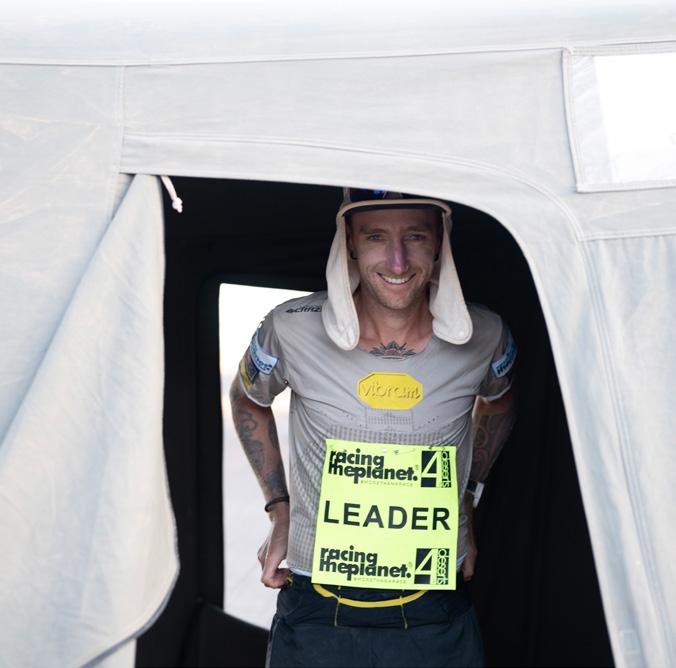


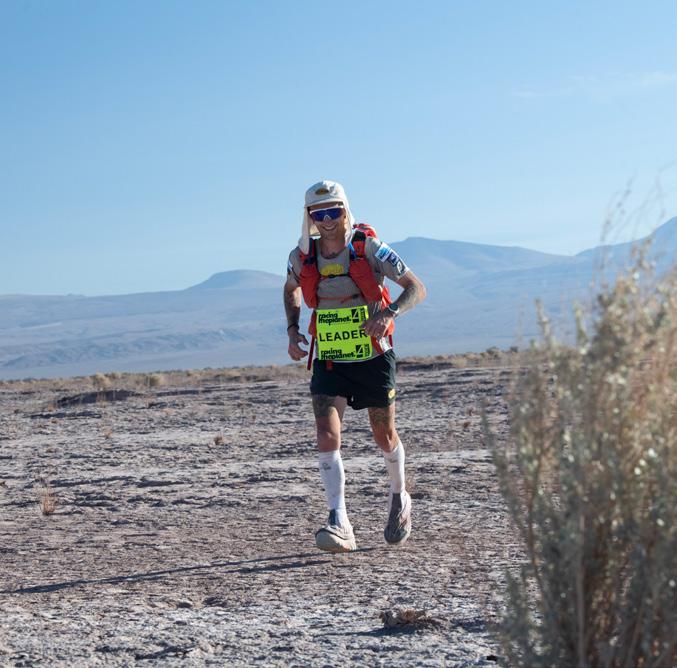

took over at the start line.
“All of a sudden I was 20km in and pushing and digging myself a hole,” he says.
“I remember sitting in the camp at the end of Stage One and thinking ‘mate, what have you gotten yourself into here?’”
Scotty won every stage and says the event was ‘one of those runs where things go from strength to strength.’
“I set myself time goals each day, which was probably silly in a way, but it also gave me focus each day and kept me really motivated,” he says.
“They did a staggered start on the final stage and 8km in, I started to catch up to the bulk of the people who started earlier and they all began giving me high fives, so I gave it everything and it was a really fun and exciting way to finish it.”
But it wasn’t winning the event, or even the surreal location, that made the adventure such a wonderful experience. He explains it was the camaraderie back at camp each night with the other runners from all across the world.
“I’ve got goosebumps thinking about it,” he says.
“Sharing such a unique, crazy, brutal experience with so many other people is what was so enjoyable and cool. It seemed like everyone at Atacama, no matter what age they were or what country they were from or what culture, everyone had some of the same DNA.
“I think that was why every conversation you had, you just connected. We were all there doing the same thing with the same passion and the bond we created was really special.”
Scotty now hopes to do the entire RacingThePlanet series taking in events at Mongolia, Namibia and Antarctica. He has also signed up as a personal trainer to provide guidance for other runners entering the series.
This year in 2024 Scotty also plans to head back to UTMB to mark 10 years since he first lined up at the illustrious event. He reveals he actually feels more equipped than ever, thanks to the wisdom that comes with experience but also a renewed focus on his mental health.
“I’ve dealt with depression and anxiety for quite a long time, but I’ve gained a lot of help over the last couple years which has been a game-changer,” he says.



“Obviously youth is something that goes away and I don’t have some of the raw speed I had back then, but I think in the sport of ultra running I have a lot more of the stuff I need to perform and that’s top two inches kind of stuff.
“I can more easily take that step back and zoom out instead of dwelling. It’s more like ‘shit happens’ and going back to the drawing board to work out what to do differently next time for a different result.”
Scotty says he’s also feeling physically better than ever.
“I’m pretty stoked that the body is still letting me compete at the top level,” he says.
“You get put in scenarios where you find out what you’re made of and after years and years and thousands of kilometres, I feel like I’m a stronger athlete now than what I was.
“I’m also focusing on stuff I probably should’ve been doing the whole time, like strength and mobility.
“I’m now running faster than I ever have.”

INSIDER KNOWLEDGE: Samantha Turnbull has been a journalist/writer for 20+ years, but only started running (well, shuffling) in 2019. She’s a self-described slowpoke, but loves the camaraderie of trail events and the feeling of fierceness as she crosses the finish line after a very long race. Her fave trail is the Motatapu in NZ.




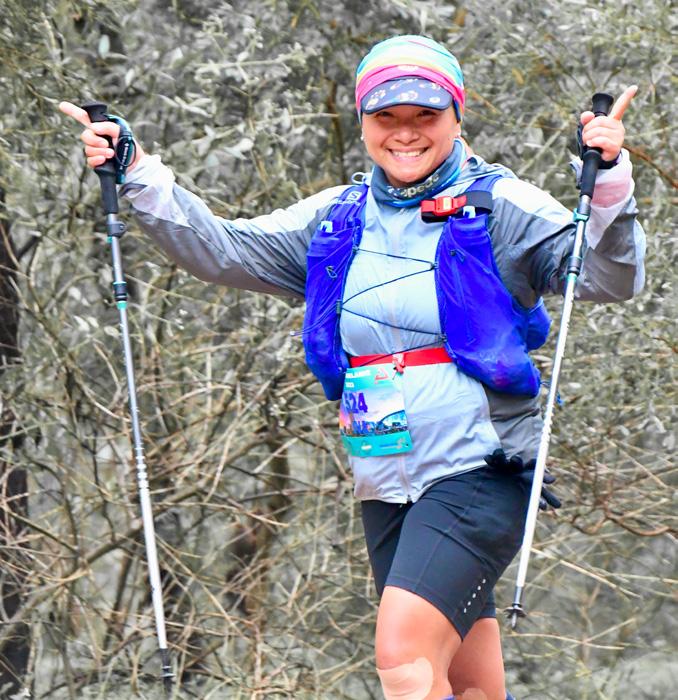

The Tour Downunder is famous for taking riders up and down some pretty amazing roads and through villages of the Adelaide Hills.
Well, imagine this…but supplement roads for trails, and pop this all into one incredible ultra marathon with several distance options.
This is where we can introduce you to Ultra Adelaide – one of the newest ultras in South Australia, and very quickly grown to be one of the biggest.
There are no lack of incredible trails right out the back door of suburban Adelaide. In fact, there are hundreds of them, but imagine an event that tied several of them together, plonked you via bus to your start line in the middle of a forest, then guided you on your merry way.
The city skyline itself first pops into view around the 40k mark, then teases you for the next 40k as you skirt the fringes of Adelaide up and down the mountains and through the creeks until you hit the Torrens River with 19k to go.
After running through some ridiculously good trails, you are confronted with a concrete path that you know your feet, legs and particularly your mind, are going to hate. It’s such a change up from what the previous several hours of trail love have offered you. And yet here we are, smacking it right on the end of an ultra, to truly test your resolve on how bad you want this.
But when the city skyline comes right into view and the lights reflect colour into your eyes, you know you’re close. And then when you see the Adelaide Oval, you hear the roar of the crowds rumbling (that you secretly make out is for you), as you close in on one of the most stunning finish lines
in Australia. Right alongside the Torrens and Adelaide Oval.
All one needs to do is get themselves right to the village at the finish line in the heart of the CBD. Check in, and from there, we bus you out to all your respective start lines, no matter the distance. Fly in from interstate or overseas and book into accommodation right near the village on North Terrace. It’s so easy and convenient and you don’t even need transport!
Hills, summits, hamlets, cherry blossoms, vineyards, alpacas, creek crossings, pine plantations, mushrooms, gold mines, food trucks, music and coffee! All what you’ll be treated to at UA.
Ultra Adelaide is an ultra that has so many twists, sights, terrains, climbs and conditions. And by twists, we really mean that taxing footpath for the last 19k. Oh, plus the climbs, the creeks, the quad crunching descents.
It’s not easy. That’s why up until a couple years ago, it had never been offered before, but now it’s here and twice as big year on year. It has an intrigue. The locals know it’s not easy, and yet they line up in numbers to give this a crack. The visitors are unsuspecting, yet return once again after their first accomplishment. This has the best parts of Adelaide’s trails and hills, and you are all invited.
Welcome to Ultra Adelaide.
When: 6 July 2024
What: 10k, 21k, 34k, 50k, 100k
Where: Adelaide, SA
How: ultraadelaide.com.au


MOUNTAIN RUNNING ADVENTURES UPLIFT AND RESTORE THE BODY, MIND AND SOUL. THEY CONNECT US TO NATURE, FRIENDS AND OURSELVES BUT WITHOUT THE RIGHT STUFF IN YOUR PACK, AND THE RIGHT KNOWLEDGE IN YOUR HEAD, A BEAUTIFUL RUN CAN POTENTIALLY TURN INTO A DISASTROUS ONE. JO WOOD TALKED TO REMOTEMED CEO DUNCAN MAUGHAN FOR EXPERT ADVICE ON HOW TO MAXIMISE JOY, AND MINIMISE RISK, WHEN RUNNING AND RACING IN THE GREAT OUTDOORS.
Ever been deep into a majestically wild and rugged run but felt that unsettling creep of anxiety?
Did you budget 6 hours but with 9 hrs on the watch and still a way to go, realise you might have underestimated things? Maybe you set off in the sunshine but are surprised by driving rain and howling winds? Did visibility suddenly diminish, and you ponder whether you’re lost?
Not having the right stuff in your pack, but the right knowledge in your head, can turn a beautiful run into a disastrous one, so it’s important to get the right advice from the right people.
Duncan Maughan is the CEO of RemoteMed, a company that offers First Aid and emergency medical response to outdoor events, including mountain ultras, and Duncan in particular is a critical care nurse, emergency and wilderness medicine specialist – someone you definitely want on your team at all times. Duncan is the authority on the kinds of trouble runners encounter in dynamic remote environments.
Fuelling Maintenance
He reveals that a lot of an athlete’s effort, both physical and psychological, goes into dealing with the environment, and to keep trouble at bay one needs to be bothered – think early intervention.
This reminded me of my personal experience at the Ultra-Trail Australia 100K (UTA100) race in 2021 where his advice would’ve served me well. It was an unseasonably cold start to the race, but I expected to warm up within the first few kilometres, so didn’t bother to put extra clothing on. I’ll fill you in on how this panned out for me, but first, let’s hear what Duncan had to say about fuelling.
When we talk about fuelling in ultra running, we refer to hydration, electrolyte and calorie intake, which impacts hugely on performance. Duncan explains how inadequate fuelling blunts training and racing potential.
“Athletic goals can quickly turn into survival ones, because maintenance of hydration and electrolyte balance is top priority for both performance and survival,” he says.
This is because dehydration occurs in hot, humid conditions where sweating contributes and in cold, mountain environments where body water is lost as moisture during breathing. It affects cognitive function, or the ability to think, and is associated with serious physiological consequences such as rhabdomyolysis, hyponatremia and hypernatremia.
“Drinking to thirst is a useful starting point,” Duncan says, and a professional sports dietician or nutritionist can recommend a fuelling strategy specific to an individual’s needs.
Duncan exhorts runners to prepare to meet fuelling requirements according to whether they’re participating in an organised event (with aid stations and support) or a solo adventure without food and water access on route. Urine frequency and colour can indicate hydration status, and Duncan acknowledges how important it is to be aware of how hydrated one is.
“Most ultra runners will inevitably be in a state of dehydration, and calorie-deficit, but it’s the extent that matters,” he says, and I start to realise why at 20km into my UTA100 race, I still felt cold. I had an ambitious time goal to meet that day. I felt that stopping to put extra layers on would have scuppered my carefully laid-out race plan so I pushed on. However, not stopping to put extra layers on did scupper my race plan, for reasons Duncan expands on.
“Calories are vital to running performance but become even more important in cold conditions, particularly when a runner slows down or stops due to fatigue, being lost or having an injury,” he explains.
“Your brain doesn’t care about your race.” This is because thermoregulation (maintenance of core body temp via shivering and blood vessel constriction) is energy expensive and of higher priority for the brain than your running goals so calories consumed might be utilised in keeping you warm, whereas simply wearing an extra layer would do the trick, instead of fuelling your run.
The brain itself has high energy demands and suffers when calories are redirected to thermoregulation. Insufficient calorie intake in cold environments means you’re unable to make good decisions. One needs to ‘be bothered’ to proactively respond to environmental changes and be aware of others’ behaviour in the same conditions. Ask yourself, are they putting layers on? Should you be? Because it’s common to experience four seasons during a
mountain ultra – and indeed, it should be expected.
It hits me. This is why during my UTA100, I never warmed up. Too many of the calories I had consumed were being utilised for thermoregulation. As a result, my brain and my running muscles were energy deficient, causing me to slow down early into the race (and hence, get colder) and to make a cascade of poor decisions; things went from bad to worse as my race unfolded.
Heat-Loss Mechanisms
“The combination of cold, windy, and wet is a killer combination for hypothermia risk because three of four potential heatloss mechanisms – radiation, convection, and evaporation – are in play,” Duncan says.
“Hypothermia is one of the most common reasons runners require medical support in races, and a real risk when participating in outdoor activities under-prepared. People all over the world have died from it.”
Runners slow down at night, so they generate less body-heat and in the latter stages of a race due to fatigue. Failure to change into dry clothes, add extra layers or use a raincoat as a wind shield also increases hyperthermia risk, and it’s much easier to stay warm than to get warm.
If only I’d heeded this advice during UTA100, when at 16 hours in, I finally stopped to put extra clothes on. After layering up, I set to work replenishing calories, electrolytes and water balance. I had inadvertently increased the level of difficulty of an already challenging 100km mountain ultra.
Duncan continues to explain that with hyperthermia, a runner needs to heed the fourth heat-loss mechanism.
“Another consideration is that if you sit on the ground due to fatigue or injury, the fourth heat-loss mechanism – conduction – must also be managed,” he says.
“Sit on your pack or get into a bivvy bag, which is far more effective than a standard space blanket. One of the first and most insidious effects of hypothermia is the loss of fine motor skills; this makes selfcare like managing zips on your pack or clothing, undoing dry bags, opening food packets, putting on gloves…increasingly more difficult and exacerbates the situation.
“The early symptoms of hypothermia are known as the ‘umbles’ – mumbles, stumbles, bumbles and grumbles (referring to loss of speech, coordination, the ability to make good decisions and low mood).
Being well-prepared provides peace of mind and confidence and reduces stress should things go wrong.”
At the other extreme, any runner who’s trained through hot and humid conditions will know how challenging this feels relative to cooler conditions. Duncan clarifies this is because, physiologically, the body works much harder to maintain core temperature but the combination of high heat and humidity, and sun exposure, also poses risks to runners’ health.
“The combination of high heat and humidity means the body’s primary mode of cooling – evaporation of heat via the skin – is less effective, despite sweat rate remaining high,” he says.
“This can lead to hyperthermia, which ranges from heat stress, heat exhaustion and heat stroke – the latter being a life-threatening medical emergency. Dehydration exacerbates hyperthermia, but care must be taken to maintain electrolyte balance when increasing water-intake, to avoid hyponatremia. To minimise the risk, choose light-coloured and loose-fitting clothing and plan your hydration strategy and water sources in advance. If someone is suffering from heat stroke, they must be cooled immediately by any means possible, preferably via full immersion in water, keeping their airway clear. Otherwise, douse them in cold water and remove all clothing.
“Loss of sweating is commonly, but incorrectly, cited as the hallmark of heat stroke. The true hallmark of heat stroke is an altered mental state, confusion and irritability, which can be difficult to assess at the end of an ultra. If in doubt, apply cooling strategies and seek medical assistance.”
Navigation poses additional challenges in remote mountainous areas, and runners tend to get lost due to three reasons: lack of preparation; loss of situational awareness, and equipment failure.
Understand your proposed route in advance, know the terrain, elevation profile and location of key junctions and landmarks. Ask yourself, ‘Is there a difference between what I expected and what I’m experiencing?’ If so, then something’s gone wrong. “Not paying attention – by being too inwardly focused; distracted by talking to someone or listening to music means you miss situational information,” Duncan says. Backups are essential due to equipment failure, such as batteries dying. Download navigational tools to your phone and GPS watch in advance whilst you have power
Sufficient fuel (nutrition, hydration, electrolytes)
Correct gear

Cross-check your gear list vs race director’s mandatory gear list

Variations in requirements
Expected environmental (e.g. climate,vterrain) conditions; likelihood and degree of potential variations

Knowledge of proposed route (including trail closures/detours), terrain type, elevation profile) and environmental conditions; expected run time
Unexpected/emergency situations that could arise
First Aid knowledge and kit
ID, record of medical conditions allergies, emergency contact (ICE: in case of emergency)
Tell someone details of planned run, including expected return time (consider your familiarity/experience of, and the nature of, the environmental conditions: will impact your safety margin in terms of ‘time to alert’)



and internet connection and know how to use them. Carry a hard copy map and compass – know how to use them.
We love running in nature, but at times we’re closer to it than we’d like. In Australia, snakes are a risk, but the majority are non-aggressive. Always assume there are snakes in the bush and if you encounter one you need to stop, move back, and allow it to go on its way if possible. Carry a snake bite bandage with indicators and in case of attack, call emergency services, employ the pressureimmobilisation technique, and await assistance.
This highlights how basic First Aid skills are essential, and it’s recommended that a
Wilderness First Aid Qualification may be more relevant.
The advice from my insightful discussion with Duncan might save your run, race or even your life – even if it’s just one single piece of this advice. In the case of my UTA100 race in 2021, if I’d adhered to the principle of ‘be bothered,’ then I would’ve stopped early on in my race to put warm clothing on after failing to feel comfortable after a reasonable amount of run time. At the time, it felt like my worst race to date but I learned valuable lessons that day, so perhaps it was in fact my best race to date.

• Pre-run: do the prep!
• Ensure you’re physically fit
• Have the right stuff in your pack and the right knowledge in your head
• Mid-run: Be Bothered i.e. early intervention.
• Encourage regular selfchecks – apply the LIFT strategy:
• Location (on/off track –last noted when?)
• Issues (hotspots/blisters/ chaffing/niggles require attention?)
• Fuel (nutrition, hydration & electrolytes – last intake when?)
• Temperature (hot/cold/ wet [sweat/rain/river crossing]/sun exposure? Layer up/down)
• Post-run: Congratulate yourself on another successful outing!


INSIDER KNOWLEDGE:
Jo Wood is a strength and run coach at Apsire2, Level 3 high performance road, trail and ultra Coach (Athletics Australia) and Level 2 coach with TrainingPeaks. She has an Immunology PhD and a background as a senior medical writer. Get more info on Jo at aspire2fitness. com.au



The Grampians (Gariwerd in Djargurd Warrung) are a craggy range, located 260km northwest of Melbourne in Victoria. Long a seminal outdoors destination, when in late 2021 finally the existing trails were all linked into a single, sweeping epic 162km/7,700m+ route originating in the north at Mt Zero and culminating in the southern town of Dunkeld. The Grampians Peak Trail, or GPT, thus was born.
ARTICLE & PHOTOGRAPHY BY SIMON BUCKLEY
23-26 NOVEMBER 2023 – GRAMPIANS, VICTORIA, AUSTRALIA: It’s Stage 1 – 49.5km, from Mt Zero to Halls Gap. An elevation of 2,000m+/2,040m-.
At a glacial pace, I edged with trepidation beneath the starting gantry of the inaugural GPT100 stage run. Immediately I stepped into the jaws of the foremost of many ascents to be undertaken over the coming four days. Step by step, stair by stair.
The late spring morning light sharpened the vivid oranges and stately greys of the daunting and majestic western face of Mt Staplyton, as we sidled along its ominous rocky flank. From there, fortunately the trail opened up into a series of well-crafted flowy trails, before digging in for the pinch of the stage which was a 530m+ ascent of Mt Difficulty with
dramatic views of Lake Wartook.
This climb involved scrambling up several sets of stairs, traversing some significant rock slabs and navigating some consequential drop-offs.
The highlight of the initial stage for me came in the engaging 6km/540m- singletrack bomb through the gums and into the event base, the town of Halls Gap. An epic way to finish off the day’s work, mind the echidna!
Stage 2 (37.5km) Halls Gap/Mt William
Stage 2 loomed as the pivotal stage, on now weary legs and with two crux climbs to endure. After nailing the initial climb up through the contemplative Silent Street gorge up to The Pinnacle for stupendous views of Halls Gap, storms and torrential rain
set in on the descent off Mt Rosea (1,009m).
This beautiful, forested 8km/680msection offered flowing singletrack into Borough Huts however the inundated path soon became indiscernible from the nearby Fyans Creek as we entered Borough Huts checkpoint and huddled under the event tent. Cups of tea and soup were the tonic until aid station captain Mikey Dimuantes (50km event male winner from the previous day) restarted affairs to the strains of ELO’s Mr Blue Sky as runners got their hike on to ascend a devilishly technical 7.5km/650m+ through the mist of Redmans Bluff and The Dials to complete the day just shy of the Mt William (1,167m) summit. Back on the event shuttle bus to Halls Gap for a massive serving of pasta in my campground cabin, which now resembled an industrial laundry as

I tried to dry my soaked gear.
The highlight of Day 3 was at the start line back on Mt William where the rising sun and assembling stage runners witnessed the incredible grit shown by the seriously tough 100mi runners digging deep. The stage and miler fields now overlapped, and would do so until the finish line in Dunkeld the following day. Encountering a sprained ankle during this stage on trails that were more technical and undulating than anticipated, this stage turned unexpectedly into the toughest day on rail for me.
Several hours were spent solo rock-hopping amongst the technical terrain of the foggy
Major Mitchell Plateau and the humid, serpentine trails of Durd Durd. I considered this endless bush may consume me once and for all, but finally the trail emerged onto open, grassy hills and some runnable trail through scrub to the trailhead at Griffin Fireline. The 2,450m- of descent had accumulated to tenderise my quads; I had mentally prepared for significant efforts on stages one and two, poring over and creating maps, trail notes and elevation profiles. Now I felt like a man without a plan who was holding on for dear life.
A new dawn, and high spirits had returned with the finish line palpable. The last stage took in the classic three southern Grampian sentinels of Signal Peak (750m), Mt Abrupt (826m) and Mt Sturgeon (582m). Halo solar seared the mist with yesterday’s nadirs forgotten and today a matter of creating and riding an emotional wave of hope into Dunkeld, remaining focussed on forward momentum through the fatigue at all cost. With a pre-race goal of sub-30 hours remaining possible, the trails around the peaks demanded my full attention, however seemed more runnable and playful than any seen prior. I felt I ran strongly and with purpose through here, with not a step more left in tank by Dunkeld. Finally, seeing the last 6km into Dunkeld laid out on the plains below from Sturgeon provided an indescribable rush. Affording myself a weary smile and the realisation that I may knock this beast off made for a grateful shuffle into town and under that arch.
After its inaugural running, the GPT already stands tall amongst trail giants around the nation and I anticipate the GPT’s stature and lore to only build over coming years. It is an

incredibly well-organised event with strong logistics (shuttles, communications, Capra app for seamless nav) and volunteers and other runners offering tremendous support and camaraderie. Squint and you may notice echoes of Victorian coastal flora as you pass through, be it some sandy trails or crescent honeyeaters - this is due to the range being an ancient 40-million-year-old ocean shoreline which has thrust, eroded and contorted itself over millennia into the magnificent range and trail that now is. For training it’s critical to get in those hill and stair sessions, and during the race make the most of the aid stations for hydration. Prepare anything you can in advance (e.g. food, equipment, so you can maximise your rest between stages.
Stage races are the way for me, the story unfolds as a series of many chapters – some terrifying, always challenging and incredibly rewarding. Just follow the yellow arrows and the canary worms…
Event: GPT100
Location: Grampians, Victoria, AU
Distances: 100mi, 50km
When: November 2024 (TBC)
Info: gpt100.com.au
/gpt100miler

gpt100.com.au

THIS IS A TRAIL MAGAZINE, SO OF COURSE WE WANT TO CONVERT EVERYONE TO OFF-ROAD! GOT A FRIEND WHO IS A BIT HESITANT TO TAKE IT TO THE BUSH? OR MAYBE YOU’RE KEEN TO TACKLE SOME LONGER DISTANCES BUT AREN’T SURE HOW TO GO ABOUT IT WHILE TRAILING IT SOLO? DON’T WORRY.
WE GOT YOU.
ARTICLE BY ASH DANIELS

There’s a strange place that road runners talk about, a place some of them have ventured into and never returned to the asphalt.
Sometimes described as an eating contest with a little running in between, or some easy running and a bit of walking to break up the run, along with a scenic view. What is this mythical place that roadrunners refer to? Trail running, of course.
Are you a road runner looking to make your first steps onto the trail and a little unsure of how to progress and transition? Don't worry we've got you covered With our Top 10 tips, where we’ll bust some of the myths of trail running along the way.
Before you know it, you’ll be joining us for fun and never looking back.
Let’s start with the obvious – terrain and distances. Without the constraints of requiring ‘certified’ distances, the variety of trail running is infinite and is open to the whims and creativity of each race director.
Events can start at a 5km distance and go up to hundreds of kilometres spanning multiple days (these are called stage races or multi-days). There are no constraints on what a course can look like, giving plenty of variety to choose from.
Trail surfaces can also vary vastly. There
are the super easy undulating tracks not too distant from a road surface, to the more technical that may involve scrambling. Before signing up for any race, you’ll be able to find course descriptions, ensuring as you start, you are comfortable with the terrain.
A common question from some surrounds the fear of getting lost, but have nothing to fear because courses are always wellmarked with easy-to-follow tape or ribbons and directions.
Myth Busted: I might get lost on the course. All courses are well-marked for ease of navigation. Only the most hard-core races require navigation, and you’ll know this in advance.
Due to the nature of trail running, they are more than likely to have more hills (or ‘vert’ as trail runners call it) than a road race. Most marathons must comply with standards regarding ascent and descent and relative to trail running are flat. No such rules apply to trail running.
Each race will publish its course profile; this gives you an idea of how much overall climbing and descending are involved in the race. Due to the inclines and additional effort required, there is no expectation that you will be able to run these hills so power hiking (yes, walking) is a valid race tactic to improve your race efficiency. This can be a tough one to swallow for road racers who just want to go fast.
In trail running, it’s okay to slow down and enjoy the awesome views.
Myth Busted: Trail running requires you to run the whole course. With courses that have less runnable and more rugged terrain or longer steeper hills, power hiking is a valid tactic. This keeps the legs fresher for later stages of the race.
When we train for a road race, we have a goal time and pace in mind and focus our training on hitting that target. Trail running has its own race demands that require a different approach to training.
If your race has more hills than you are used to, building in specific hill sessions each week will increase your leg strength and make you a more efficient climber and descender. Your long run will need to incorporate a degree of climbing as well, so forget the distance and pace targets.
Running to time on the trails factors in these multiple differences and means you won’t cover as much distance as you may have on the road and will be better prepared come race day.
Myth Busted: Trail running requires me to have easy access to trails to train regularly. Whilst practice makes perfect, there are plenty of alternatives.
Local reserves, short sharp local hills and stairs are all good training aids for the trails.

As a road racer you will probably be used to memorising your pace splits when going for your new PB and race time (outcome goal). With most trail races, this tactic is unlikely to work. Trail running sees a huge variety of speeds from kilometre to kilometre, where you’re dependent more on the course terrain. This makes it difficult not just to compare different races, but the same race across different years.
Focus on process-orientated goals. These can include ensuring you’re eating and drinking enough for the distance; remaining positive as the race progresses; and preserving your legs for later in the event by hiking the hills.
To judge your success, look at how you’ve improved in your category rankings for a race. Every event will be different and this adds to the joy of trail running.
Myth Busted: Whilst you may not break any PBs for distances, being proficient at descending the hills means you are more likely to hit faster paces than the flat, and it’s way more fun.
By its nature, trail running has what we call technical terrain. This could be as simple as a less groomed track with a scattering of stones, to the more extreme end, an almost rock-climbing ascent and a steep scree, quad-busting descent.
Building a strong foundation is crucial for stability on rugged trails so include strength training for legs, and stability exercises. Squats, lunges and balance exercises strengthen muscles whilst reducing the risk of injury. Plyometric exercises like skipping, hopping and bounding drills enhance explosiveness and agility, which translates to handling the trails with more confidence.
Where you have the opportunity, including longer downhill running, using an eccentric muscle contraction which will further strengthen your quads.
Myth Busted: All my road training won’t be relevant for the trails. None of your existing training is wasted and will add a significant amount to your racing on the trails.
Nutrition and hydration are utilised differently on trails, because there may not be tables lined up every couple of kilometres to grab a gel or drink from.
At organised trail races, aid stations serve as crucial re-fuelling points for supplied goods and your own drop bags (your personal items you’ll need for re-fuelling). Make sure you research the event beforehand to learn what food and nutrition will be stocked, the distances between each aid station and how many there are on course.
GI (gastrointestinal) issues are the biggest cause of failure in trail races and your nutrition plan needs practising as much in your training as other aspects. Remember, nothing new on race day applies to the stomach as well.
Myth Busted: Trail running is just an eating contest. Whilst nutrition is a key part of trail running, many other parts add to the enjoyment and challenge.
By its nature training on the trails will come with added risk compared to the streets. Here are our top safety tips for when heading out on training runs:
• Run with a friend, partner
• Carry all the food and water you need plus more
• Take the mandatory kit for the event you are training for
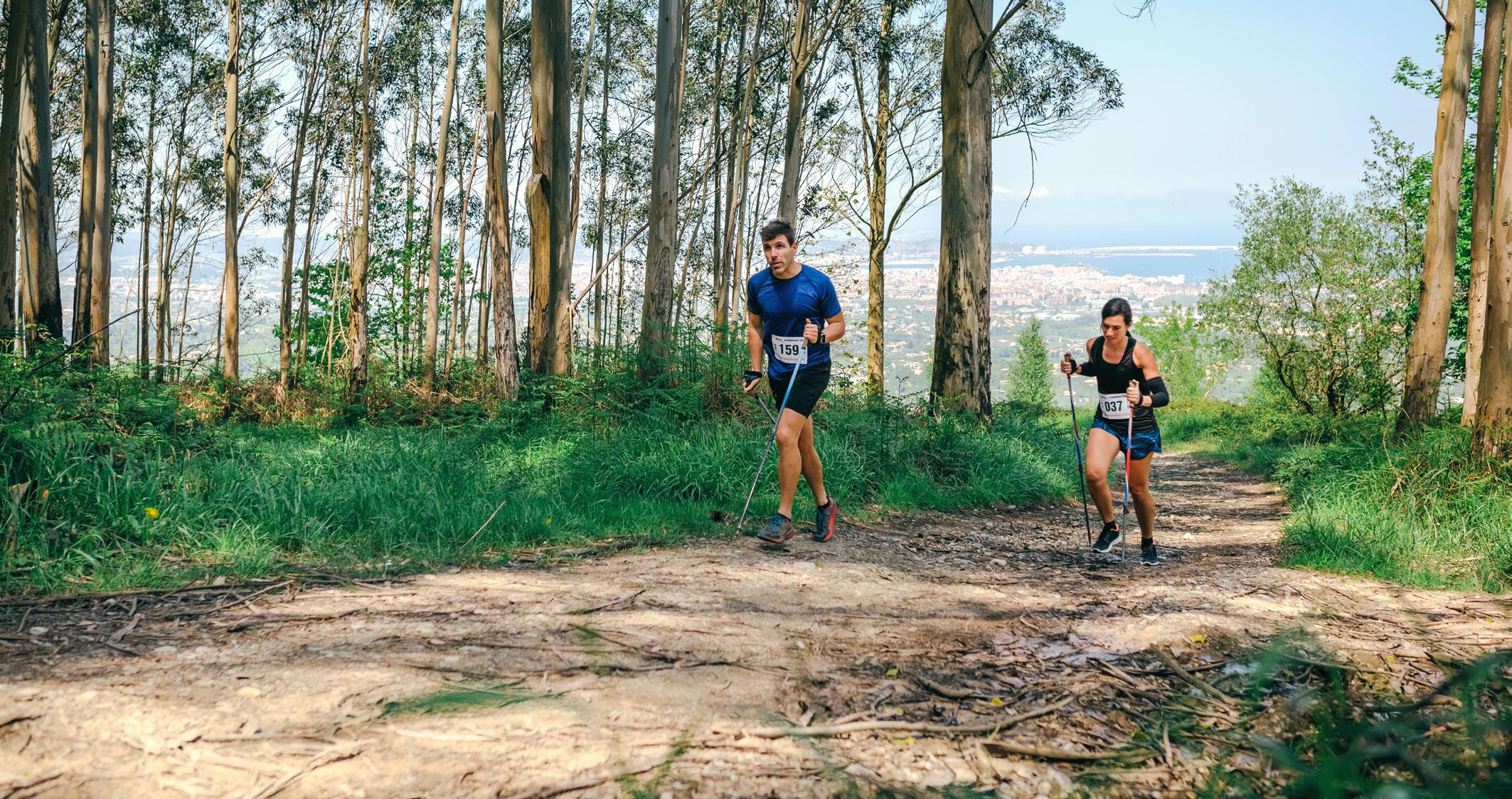
• Tell someone where you are going and when you plan to return
• Check the weather and be prepared for the forecast
• Have a way to navigate. This may be an old-school map and compass or GPS route. Make sure you can tell where you are at all times
• Remember you will be slower than on the road, so take that into account for your planning
Myth Busted: Trail running is dangerous. Whilst it has its unique challenges, following basic rules will ensure a safe day (or night) out.
Many trail events require the carrying of mandatory equipment, particularly in ultra distances. This is a non-negotiable. Kit lists are published by race directors and you can get them well in advance.
Having a fully-fitted mandatory gear kit ready allows you to train with it before the race, test it and know how it all fits and how it feels.
Standing at the start line and thinking your pack is too heavy having never worn it before is not a good start!
Other equipment to consider are your shoes and running poles. Not all races will require
a trail shoe, and a road-type shoe may be adequate but check ahead of time and train in the shoes you plan to race in.
Running poles are optional but are a valuable tool as they provide balance, stability, reduced fatigue, and increase speed. Learn proper pole techniques, such as double-pole and single-pole planting, to use them effectively. It’s all about consistent practice.
Myth Busted: I need expensive, specialised gear to start trail running. Existing shoes in most cases will be good enough to get you going. You’ll be surprised how much of the mandatory kit you have already.
The trail-running community is renowned for being highly supportive. The sport often takes place in remote or rugged terrain, which can present unexpected challenges and risks so naturally, trail runners look out for one another.
The community is welcoming of runners on all levels and backgrounds. Whether you’re a total newbie or an experienced sub3 marathoner, you’re always going to find encouragement and support.
Trail events often have a festive atmosphere where participants cheer each other on and celebrate each other’s achievements, and many have ‘villages’ at the start or finish lines where socialising is a part of it all.
By now I’m sincerely hoping you’re still interested in hitting the trails, have a different view of trail running and are now ready to sign up for something big! There are plenty of races from local grassroots to bigger international events to choose from.
The race you decide on may depend on the experience you have already from road running. For most of us, a shorter race up to half marathon distance on the trails was a good starting point. Looking for more of a challenge if you have completed a road marathon, an ultra of 50km is a brilliant step up.
Fair warning though, so welcome to the trails because you’ll never go back!

INSIDER KNOWLEDGE:
Ash Daniels is your Coach’s Aid Station columnist. He’s a Level-3 Athletics Australia Performance Development coach at Journey2Ultra, where he specialises in trail and ultra running. Ash can be found at journey2ultra.com.au

Ready for that next step beyond the ultra, but unsure where to start?
Right here, right now, inspiration’s come calling in the form of Harmony Waite.
And if you haven’t heard of Harmony Waite before…well, you have now.
Back in 2019, she was one of the lucky few to race in her first ever 200 miler at the inaugural Delirious WEST 200 miler in the south west of Western Australia –one of only nine women to finish. And now, in 2024, she’s been inducted into the event’s version of the Hall of Fame, the Delirious Folklore, where she will forever be sponsored by hosts Ultra Series to enter the event – any year, any distance.
Harmony herself found inspiration about six years ago from a small cohort of West Aussies who had completed 200 milers, and it didn’t take long before she signed herself up to be a part of the ‘stupid is as stupid does’ club.
Fast forward five years, and Harmony has completed no fewer than seven 200 milers in four different states with Ultra Series! She’s given so much inspiration to an abundance of runners across the state, that according to Ultra Series event director Shaun Kaesler, there was no doubt it was time for Harmony to be recognised for her background in endurance.
“Six years ago, she came to me for advice on running a 200 miler,” he recalls.
“Today, I don’t really know of many more qualified than her to ask for advice on doing what it takes to get from the start of a 200 miler to the finish. One of the greatest runners I have the pleasure of knowing and one of the most remarkable and under-rated 200 miler runners this
country has ever produced.”
Harmony reveals that doing a 200 miler for the first time under an Ultra Series event is a brilliant way to see the country and not have to worry or stress about the things that she’d normally have to if she were to run it on her own.
“I initially wanted to do it in 2019 because I could see a huge section of the Bibbulmun Track whilst being fully catered to with a roving buffet, aid stations, all the logistics sorted and organised…it was a brilliant way to see a part of Australia that I’d never witnessed before,” she reveals.
“200 miler events like Delirious WEST are amazing, there is so much support from the organisers and volunteers that you seriously never have to worry about a single thing. All I ever have to do is carry my mandatory gear and everything is ready and waiting for me at every checkpoint or aid station; it’s a brilliant way to focus on the distance, on the physicality of it, take moments to capture the views and lock them away in my mind.”
Harmony is always loving and learning from the ultra running community, enjoying every moment spent on the trails training or racing whether it’s going at it solo or joining a group for a bit.
For her ‘give it a crack’ and ‘if I’m going to be at the start, then I may as well make it to the finish’ attitude, Harmony is now forever imprinted as a local legend in the history of Delirious WEST, from finding inspiration to being the inspiration..
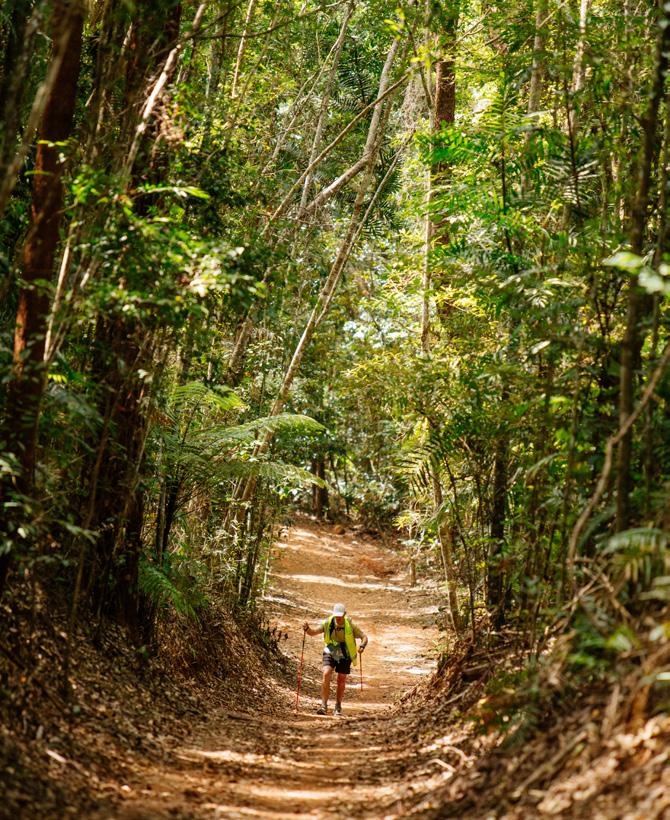
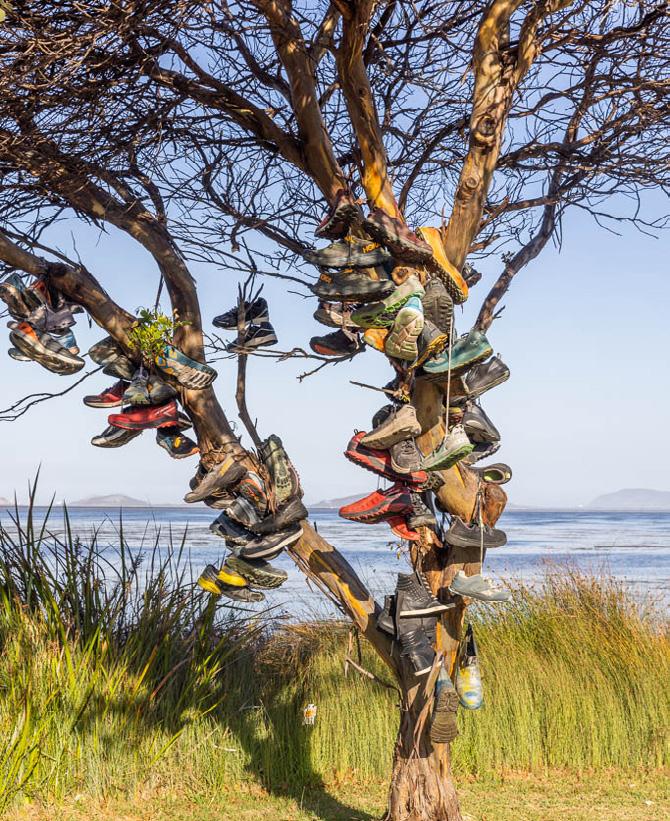




DELIRIOUS WEST
When: 9-13 April 2025
What: 100mi, 200mi
Where: Northcliffe to Albany, WA
How: deliriouswest200miler.com.au


IT’S TRAIL RUNNING’S MECCA, WHERE NEW ZEALAND’S BEST OF THE BEST IN TRAIL RUNNING CHALLENGE THEMSELVES ABOVE AND BEYOND WHAT THEY THINK IS HUMANLY POSSIBLE. THE WILD TOOK SOME SHARP CORNERS BEFORE KICKING OFF ITS INAUGURAL RACING EVENT IN DECEMBER 2023, BUT COMPETITOR RACHEL BRIDGEWATER WAS THERE TO BEAR WITNESS TO THE INCREDIBLE INSPIRATION BEHIND SOME OF THE RUNNERS WHO LITERALLY TOOK ‘TO THE WILD’.
CONTRIBUTED BY RACHEL BRIDGEWATER | PHOTOGRAPHY BY BEN WALLBANK
As a trail runner, we’re always looking for that next adventure. Something that grabs our attention…something that stops us in our tracks.
Or perhaps something that requires us to extend ourselves as an athlete and maybe just as a person…something that frightens us just a little.
When I first heard whisperings of a new event curated by Malcolm Law (the original creator of the now over 30,000 strong Wild Things NZ trail running community) in conjunction with Ian Evans (one of only six athletes to ever complete the now well-known Revenant) and James Harcombe (an all-round legend), I knew this was one I needed to be a part of.
I first met Malcolm when I was fresh faced and new to Wanaka in NZ. At the time, I was a road runner (yes, unfortunately) and had never really climbed mountains, but had a taste of my first 100km trail ultra and I wanted more. I turned up in my very first week to Wanaka trail runners, knowing no one but ready to immerse myself in the trail running scene.
It’s The Law
Then in strolled Malcolm Law. It was like a celebrity moment. Here was the Godfather of NZ Trail Running and as one of my new running buddies at the time John Iseli put it, the legend preceded the man.
Malcolm always seemed to be ahead of the game. Whenever my husband and I would plan a big trail run in the mountains thinking we were the first, Malcolm usually had already done it (and probably twice). Fast forward several years later, here he was again, but this time with the idea of a 100 mile mammoth of a mountain race, which would come to be known as The WILD.
The idea was conceived after running the Hardrock course over several days in 2018. Malcolm came away thinking he could create something similar in Central Otago, and so began the creation of an audacious course – one that didn’t require out and backs or running on the road.
But as quickly as the idea was conceived, reality hit. He didn’t have the experience to set up and run a commercially viable event. So for help, he engaged a company to take over the running of it, however, it also became apparent, once the course had been conceptualised, that only a niche
number of trail runners could complete it. Thus, the creation of many more races for the event came to life. This would soon become known as a ‘festival’ of trail and mountain running; something for everyone.
As my husband and I ploughed into training for the event (even throughout heavy snow dumps that winter), we were highly motivated to take part in what would be a race that would push us harder than we had been pushed before. However, deep into training, we received an email that stated the company tasked with delivering the event had gone into receivership just eight weeks out. Like a cold hard wind slap you receive whilst cresting over the top of a mountain, the event took a nosedive. In its inaugural year, The WILD would not run.
Concerned with the response that might have come from the trail running community, a community Malcom had so carefully and lovingly helped to create over many years, and with five dedicated years of trying to put the event together, Malcolm took this hit hard on a real personal level. He describes this moment as a ‘feeling of being numb’.
What he didn’t expect though was a reaction of support from the very community he had helped to create. For anyone who has ever run in a race that asks you to extend yourself and your capabilities, this was like the ‘crowd effect’ – when you come into aid station, not sure you have it in you to carry on and sometimes wishing you could crawl under a bush and pretend you weren’t even there to begin with, and then you see your friends and family in that pivotal moment to give you the energy to carry you through.
In the two weeks that followed this news, multiple members of the trail running community got in touch to offer support including several other race organisers. Malcolm assembled a ‘dream team’ of trustees to help deliver the event. The likes of Shaun Collins, a softly spoken, highly intelligent and capable guy who already ran Lactic Turkey Events otherwise known ironically as The Running Beast, and others like Terry Davis, Highland Events race director for events such as the Northburn 100 Together this team, would go on to create a five-day festival of all things trail and mountain running.
It wasn’t all that simple though. Formulating a plan for races in such
remote mountainous areas wasn’t going to be straightforward, but what emerged were events like the V5000, V3000, V1600 (named for the vertical gain involved) and Beast of Brow and Beast of Beetham.
Entries opened in April 2023, at which point, Malcolm said there was no way the event would not be delivered. And so The WILD was back on – so were we. Training would resume with a vengeance even though for me this meant training again from scratch following a broken ankle but if Malcolm could pull this off, then so would I.
Standing at the start line that morning of the V5000, the vibe in the start shoot was electric. Looking around to see so many amazing athletes, friends and new faces to the trail running community, people like Cullen Rhind whose mother had convinced him to sign up; Hannah Wall, a new face to the trail running scene; and Brooke Cox, a girl I had raced a month earlier at the Mt Isthmus Traverse. Also, many of my Tailwind team mates and of course, my favourite training partner, my husband James. We were to be amongst the first members of the Pioneers’ Edition.
Whilst climbing the races’ punchy ascents soon after, alongside bluffs high above Arrowtown, I thought about what the story of the event meant to me as an ultra runner. It’s always been my belief that to run an ultra, you need to be willing to roll with the punches. There will always be moments when you don’t feel like you can carry on, and in those moments we have a choice. Do we let go of the finish line that we dreamed of crossing because it all just got a little bit hard, or do we forge a path forward not knowing if we will finish but being willing to step outside of ourselves and try? Not just in trail running, but in life in general.
The Inspiration, The Runners
This event starred many of those trail runners with their own incredible stories, and these stories would go on to inspire others in their own personal journeys by proving just what is possible, not simply because of the challenges they faced, but by how they so ferociously overcame them.
Cullen Rhind would go on to win the V5000 in a blistering time whilst simultaneously managing his Type 1 diabetes.





Hannah Wall would put in a commanding performance placing 3rd Female in the V5000. What I didn’t know at the time was about her journey to get to The WILD, which she explained began from a ‘place of darkness and self-destruction’ where at times she couldn’t get herself out of bed. Trail running had become the thing where her mind could be calm when it wanted to be anything but. She would go on to describe this race as a true celebration of what she had done for herself, proving that even in the darkest of moments, we have the power to choose for ourselves the outcome.
Even the girl trying to outrun me on the downhill that day, Brooke Cox, trained like an absolute maniac for this event (and I knew it thanks to Strava), only to come down with what she now suspects was giardia the weekend before, but still willing and ready to be fiercely competitive and not giving an inch.
In the V1600, trail runner Helene Barron also lined up. After an incredible Top 5
performance at the Tarawera 100 miler earlier that year, she went on to be diagnosed with tongue cancer. Helene still showed up at The WILD, with a smile on her face (as she always does) despite a very challenging year of treatment.
Going over that finish line for myself that day, knowing what I had had to overcome to be there and to be greeted by the one and only Malcolm himself, was a special moment that I will not forget. Later the next day, he received a standing ovation from the very competitors who had taken part in the event – a moment’s acknowledgement by everyone, of the commitment and sacrifice it had taken, to reach this finale, and a pivotal moment for the man, who had overcome it all to get us there in the first place.
The story of The WILD, in the end, became one of perseverance and one of commitment to the finish line, but most of all, one of community. People inspiring and supporting people to achieve big things.


Because in the end, whatever the outcome, we all know, it takes a lot to be prepared to step into the arena. And those who do, despite overcoming their own challenges, are the stories that we come to remember.
Even more audacious are the people that step into it first. The Pioneers’ Edition of The WILD (2023) is a celebration of trail and mountain running that became all of this.

INSIDER KNOWLEDGE:
Rachel Bridgewater is an ultra distance mountain runner from Wanaka, NZ. When she isn’t busy running in the mountains with husband James, she’s busy at home with kids and works as a physiotherapist. She describes her fave trail races as the ones with punchy ascents followed by a sweet flowy downhill to the finish.
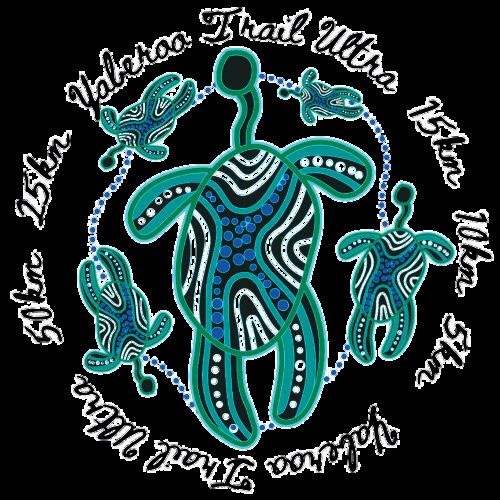









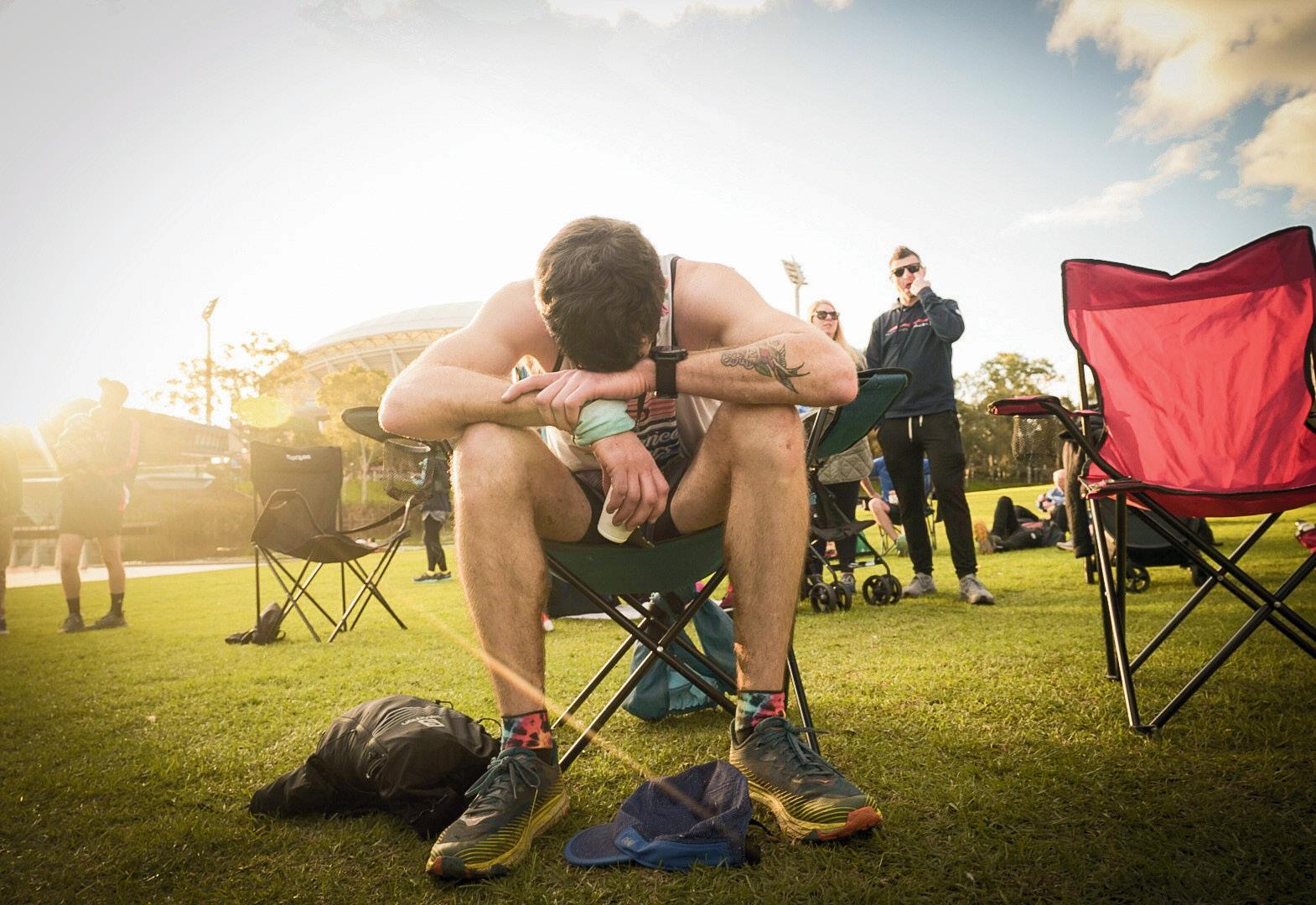





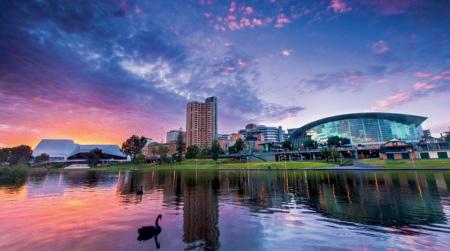


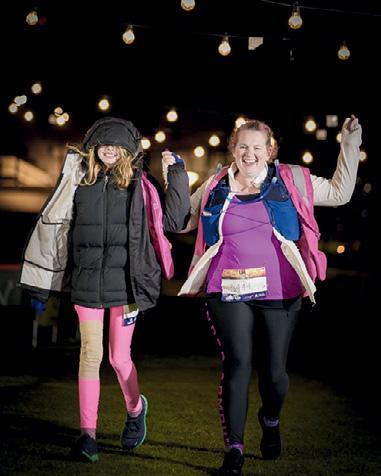


THE WESTERN ARTHURS ARE ONE OF TASMANIA’S ICONIC, EPIC AND CHALLENGING MULTI-DAY HIKES. OVER THE NEW YEAR PERIOD, TRAIL ENTHUSIASTS AND RUNNERS JOSEPH NUNN AND MATE JUSTIN DYER RAN THE FULL K-A TRAVERSE FROM THE CARPARK IN ONE SINGLE HARD PUSH. LITTLE DID THEY KNOW THAT WHAT STARTED AS AN AMBITIOUS DAY TRIP WOULD MORPH INTO THE MOST GRUELLING TEST OF PHYSICAL AND MENTAL LIMITS; A BRUTAL BATTLE FOR SURVIVAL AGAINST THEIR OWN BODY’S REBELLIONS. THIS IS THE UNFILTERED STORY OF THAT JOURNEY ACROSS THE JAGGED QUARTZITE PEAKS THAT BECOME THE HARDEST THING THEY’VE EVER DONE.
CONTRIBUTED BY JOSEPH NUNN
PHOTOGRAPHY BY JOSEPH NUNN, JUSTIN DYER
With a few weeks off work for Christmas 2023 and some residual fitness from a 100 miler, I craved an epic adventure, and the Western Arthurs beckoned.
I enlisted mate Justin Dyer for a New Year’s Eve mission to round out a big year of running, so we put it on our calendars and convinced our partners to come along for a camping trip.
Three days earlier, I went to a music festival and had a monstrous drinking session. After more than 300 days of abstinence, I finally let the hedonistic urge to binge get the better of me and so I was still suffering from the deleterious effects of alcohol while frantically preparing for the run. I had a busy day of packing then picking up my partner Lauren and her sister Jemma from the airport (Jemma was coming camping too). I drove out to Scotts Peak Dam all the while feeling horrendous and hoping for improvement.
lEFT: Justin making his way towards Haven Lake.
We settled into camp for the night, cooking dinner and discussing the following days plans with Justin and his partner Sam. The girls decide to walk Mt Anne while Justin and I were out running. Hopes of a good night’s sleep were dashed by a blocked nose and headache. My physical state was making me anxious, further impeding my ability to sleep.
I forced myself out of bed to begin preparing, fighting the urge to lay down and go back to sleep. Eventually I tell myself that I can always turn around and head back to camp if I’m not up for it.
We look for friends in the sign-in book and see that local running legend John Cannell has signed in that morning, running to Oberon return. Wondering if we may catch him, Justin and I officially signed in and headed off onto trails that were suspiciously nice and runnable.
The track soon degraded to classic South-West Tassie knee-deep mud. We ran and tried to move efficiently but the mud holes were either a few centimetres deep or knee deep – there was no way of knowing. Establishing a rhythm would be hard with holes that could swallow your legs and try to steal your shoes.
I was feeling much better but deep down, not feeling as great as I should have been. Nonetheless, the early kilometres passed by quickly and we got to Junction Creek campsite in good time, where we took a non-traditional left hand turn at the junction and ran along the plains, a track that is crushed quartzite (conducive with a good running pace). Snot rockets were flying at a rate far higher than usual, and I was also less inclined for conversation.
At Seven Mile Creek we crossed, then turned right and headed towards the mountains, covered in clouds. This was the point I told myself I could turn around, but as I still felt good enough, I didn’t give it much thought and continued on.
We arrived at the base of Moraine K and began our ascent into the clouds. Climbing was a nice change from the plains and we both fell into silence hiking up the steep slope. Behind us was a
stunning view out over the plains which soon disappeared as we moved above the clouds. But here, the temperature dropped, the wind increased and there was a misty mizzle in the air. Saturated and cold, I felt anxious about the conditions for the rest of the day – the Western Arthurs are notorious for wild and unpredictable weather.
The climb was long and arduous. We couldn’t see far ahead so had no idea how much further we had to go but eventually we encountered more quartzite features, and we finally arrived. The traverse could begin.
The novelty of the terrain raised our spirits and we scampered across the rocks with joy. Nestled in the clouds I lost all sense of direction and with low visibility, my lack of situational awareness made me disoriented. Justin knew the way but I still occasionally looked at a map for a sanity check.
After spotting Lake Sirona, the track turned into a low grade rock climb and our pace was slow despite the scrambling and scampering being super fun. The distance from Haven Lake to High Moor campsite was only 4km from here, and once we got to the lake we took a slight toilet detour. It was very nice to tick off the first section along the range, but I knew there was still plenty to come.
We began towards Beggary Bumps, known for being relentless. Part of the reason for running the route in reverse was to take on the Beggary Bumps with less fatigue. As I gave this all some thought, I tried to regain function of my fingers but everything I touched was wet and I risked soaking my gloves, making me avoid using my hands – quite the dangerous tactic in such terrain.
Thankfully my hands warmed quickly so ditched the gloves and put my hands to use. A lot of the time was spent walking on all fours clambering up and down the rooty rocky terrain, but I put all of my faith in small roots, using them as hand and foot holds.
The Beggary Bumps lived up to their reputation. The ups and downs went on forever and it was tough, and it was rocky with a topping of scrub. Up until this point we hadn’t seen a single walker since
Junction Creek hours earlier, and we both wondered why. But finally at High Moor campsite, we spotted walkers setting up camp and were impressed when they found out we were on our way ‘to the carpark’.
I was starting to feel depleted and mildly nauseous, and wondered if I’d messed up with nutrition and hydration. Justin and I started using what little resources we had to motivate ourselves, and promised each other two of Justin’s cinnamon Oreos each when we arrived at Lake Oberon. It was then I decided to sit down and employ some self-care, namely paracetamol, a gel, food, electrolytes, sunscreen and sunglasses.
Miraculously I began to improve and the weather followed suit with clear views of the mountains revealed. It was truly an epic trail. Throughout the day I would look ahead at the mountains and struggle to conceptualise a route forwards, yet the trail always seemed to find a way.
Passing over a rise we thought we saw Lake Oberon only to realise it was Lake Uranus, and at the top of the climb, I looked back to where we had been. I was in awe of the mountains; different to any other Tasmanian mountains I had ever been on.
With Oberon tantalisingly close we followed the rock cairns to what seemed like a dead end, and we backtracked to no avail. Back and forth we searched for an escape, and we both started to worry. Our options were to remain stranded or climb down a dodgy descent. Justin made one last ditch attempt at following the rock cairns towards the dead end, where he found a tight hole in the rocks and manoeuvred his body down. I followed his lead and with some guidance on foot holds I made it through to the track below. The euphoric feeling of relief at finding our way made the whole ordeal seem worthwhile.
I rode the emotional waves of euphoria all the way down to the small lake near Oberon, and it was here we rewarded ourselves with Oreos and a refill of water. I was finally feeling good, physically – it only took 12 hours to warm up. But from this point onwards things started going downhill slowly, then rapidly.





Forging forward, the track condition was much improved and we ran strong past Square Lake and beyond. Our pace increased and so too did the levels of exertion. I was still riding high but I could feel my life force gradually depleting.
Each climb got harder, almost as though there was a compounding effect, so I sipped water and ate continuously hoping to fend off a further bonk. Consistent movement was my focus to keep the nausea at bay, but my demise was gradual and each hill chipped away at my condition.
At long last Lake Cygnus appeared ahead, and I should’ve felt elated but I felt deflated instead. Reduced to a snail’s pace I started the climb from Cygnus, tentatively taking each step and riding the associated intense waves of nausea.
In my state of extreme decrepitude I struggled to grapple with the prospect of nearly 20km further to go to the end. Justin patiently waited, allowing me to face my demons.
My next milestone was the top of Moraine A, but my sense of achievement upon reaching this milestone was dashed by the expansive view ahead showing great lengths we still had to travel.
Downhills were my friend and I used this newfound potential energy to fling myself down the hill. In a lull of nausea, I was able to get a decent way down before it emerged to gradually consume me. My thoughts ventured into extremely dark places, and I wondered if I’d ever enjoy trail running again.
More paracetamol, more water, more food.
When we reached the bottom of Moraine A I was talkative and happy – the medicine began to take effect. Justin and I were both incredibly impressed with my resurgence from the depths of hell.
We reached Junction Creek at sunset, and knew we were on the home stretch. Things went well and we made progress. When the trail conditions improved and we get onto duck board I know we are so close to the end, but less than 2km from the end I was reduced to a slow walk again due to nausea – again.
The mission was rounded out with a short death march to the end. Finishing was such a relief.
When I emerged from the toilets, Lauren came to walk me back to camp. I found Dan Rhodes (Jemma’s partner), good mate Joel Kovacs and the rest of the girls

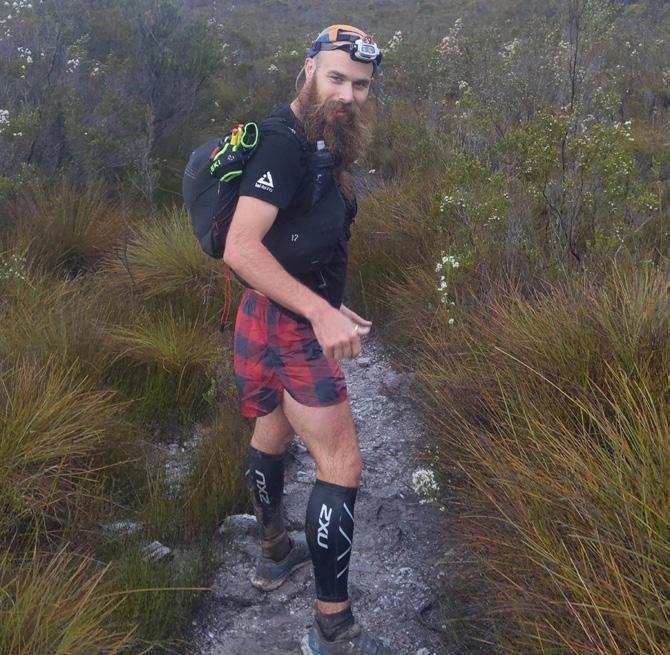
sitting around a campfire. We arrived at 11pm – just in time to see in the new year.
Sitting around the campfire, I shivered and shook violently; Dan perplexed at my state of ruin. After two bites of a burger, I couldn’t handle any more thus taking myself to the tent to flop down fully clothed and muddy.
That’s where I stayed for the next nine hours, whimpering and feverish.
I’d hoped a good night’s sleep would have restored me, but I woke early the next morning actually feeling worse. According to my watch, my heart rate and stress levels were through the roof, my body basically freaking out.
When I eventually made it home I found a RAT to check if Covid was to blame for my infirmity. Indeed, it was. I finally had an explanation for all of my struggles.

The following week was dedicated to recovery. In the final stretches of the run I’d pledged not to return to the Western Arthurs for a long time, but as the days drew on, I felt the urge to go back and rewrite some memories. I mentioned this to Justin and he said ‘Just say a date and I’ll be there.’
I’ve seemingly recovered to full health. Today, I’m frustrated that I put myself through such an ordeal, but I also feel somewhat accomplished to have been able to conquer the Western Arthurs with Covid. This one will be deeply ingrained in my memory. I am certain that it is the hardest thing I have ever done.
The Western Arthurs shattered me, however now that I have pieced myself back together, I have pledged to return. Not to conquer but to reconcile. Even

after my destruction, a love for trail running has re-emerged from dust to motivate me for future endeavours.
Top: What a view. BOTTOM LEFT to right: Justin at the beginning of the adventure; Beggary Bumps ahead; Justin crossing one of the

INSIDER KNOWLEDGE:
Joseph Nunn, a Hobart-based trail runner, thrives on pushing his limits on Tasmania’s most challenging terrain. While speed is his aim, the rugged landscape often has other thoughts. For Joseph, the most memorable journeys involve overcoming challenges and unexpected turns which he recounts at trailflow.run




















THERE ARE PEOPLE IN THIS LIFE WHO HAVE PURPOSE, AND CALLAN GATES IS ONE OF THOSE PEOPLE. IN JUNE 2022, THE CENTRAL COASTER FINISHED A WHOPPING 250KM FROM NEWCASTLE TO SYDNEY IN AN EFFORT TO RAISE FUNDS FOR THE LEUKAEMIA FOUNDATION AFTER THE DEVASTATING PASSING OF HIS WIFE’S MOTHER. HAVING SEEN THE CAUSE AND EFFECT OF WHAT THE ILLNESS DOES TO FAMILIES, CALLAN TOOK TO THE TRAILS AND CREATED AN ADVENTURE IN MEMORY OF THOSE WHO WERE ROBBED OF THEM.
What will I think tomorrow when I’m showered, belly full of food and in my warm bed?
Will I be pumped to have completed the adventure or will I be in a deep low because I quit? Too many thoughts go through my mind; I’m hurting, bad. I’ve been running for 21 hours.…110km with 140km to go. As I’m winding through the mountains of the Southern Hunter Valley, I begin falling asleep.
It’s not a good sign. This seems insurmountable.
I’m Cal, a 37yo guy from the Central Coast. I like running, but I’m not that good at it and I’m certainly not very fast. I don’t really even look like a runner – hell, I have a dad bod! When I set this challenge there were doubters, and I don’t blame them, but don’t underestimate a guy with purpose, who knows that yes, at some point I am going to be back in the comfort of my own bed with my beautiful wife Tara – the driving force behind this world of hurt that I’m experiencing.
The Backstory
Tara was a 3yo when she lost her mum to leukaemia. Leaine was a fit and healthy 33yo who went for a routine check-up after feeling not quite herself on a skiing holiday. Nine months later, having received
the devastating diagnosis and undergoing intense treatment, she died – and the pain has never left Tara and her family.
So I’m running with a clear goal – to help the 53 people diagnosed every day with blood cancer. A decade or so ago, Tara shaved her head and in doing so raised $9k for The Leukaemia Foundation. It inspired me. Knowing I couldn’t shave my head (I’m bald) I wondered how I could contribute. So I conjured up this wild plan; running from Newcastle to Sydney on the Great North Walk Trail, 250km in length and climbing over 9000+m of elevation in a single push.
I called it The Blood Run.
Could I do it? I’d never know unless I gave it a crack. The date was set for 2 June 2022 with a goal to raise $100 per kilometre of the 250km trail – that would equal $25,000. Nine months of training, let’s give it a rattle.
And So It Began
The day had arrived. Bells were ringing as I set off from Newcastle’s Clock Tower at 5am, solo. As the sun came up, Novocastrians were heading to work and I felt alive.
At 25km a mate joined me, Dan Borgas, who decided he was going to run the next 100km with me. Legend. We headed up and met the crew at the base of Heaton Gap,

a climb 1km in length but ascending over 350m.
At 41km we hit the climb together, moving slowly but having fun. For 10km we were going up and down, up and down. I had forgotten how hard these technical trails were. They were brutal. Soon enough we were sitting at Watagans HQ with my crew, noodles in hand and a fire flickering nearby. I took in the short-lived comfort because we wouldn’t be seeing the crew for hours after this.
It was getting dark and bloody cold as we moved through the trails. When we hit Congewai Road, we found ourselves covered in the light of the stars and the moon – one of the many highs.
“Cal, we’re over $28,000!”. One one-third of the way in, and we’d already surpassed the fundraising goal. I thought about the generosity of people – so wild. Even kids were giving $1.50 from their pocket money.
Leaving the next checkpoint, I felt on top of the world. We were off to another climb, like Heaton Gap – long and steep. My belly (which is sizeable) was full of stew and I was pumped.

But highs are always balanced with lows, and I was about to hit one. Halfway up the climb I started dry reaching and vomiting. Then down into Watagans Valley, which is an extremely steep descent, we arrived at the checkpoint and I was cooked. In those 9km I’d gone from feeling like The Rock after his cheat meals, to feeling like someone had ripped the life out of me. I had a short sleep, some noodles and trekked off into the night, where fatigue started to hit.
We didn’t see the crew for another 5 hours. That was the point I’d started to fall asleep. We were 6km from the checkpoint on Yarramalong Road and I just couldn’t do it anymore. The front seat of the old Landcruiser felt like a luxurious bed in the Sofitel; I slept for 60 glorious minutes. It’s amazing what rest can do for the body and mind. I awoke refreshed in the early hours of the next day, and we ran into Yarramalong. Dan had completed his tonne, and my cousin Jesse jumped in, having flown from Melbourne – what a guy.
Dan Ferris, who was leading the crew and was absolutely crucial to the whole event, updated me on the latest fundraising figure – $32,000! I smashed pancakes and
took off up Bumble Hill Climb on route to Somersby, a 25km stretch and about 1100m in elevation. That would be fine normally, but I had 115km in my legs already, over 3300m of climbing and a bit over an hour’s sleep. Jesse kept me moving and as Dan promised, Somersby was filled with friends, family and cheeseburgers – probably not the best nutrition however salt, fat, sugar all felt good at this point.
It then got to $34000! I was told The Today Show wanted to interview us when we got into Sydney.
My new goal kicked in – $50k. From there on, every checkpoint was filled with friends, family and people keen to support the cause. Some mates jumped on for the next 35km to Patonga despite it being wet and freezing. I tried to have a kip on the trail but it was just too cold to sleep. With flooding up to our shins on the trials, my low body temperature wasn’t climbing, and hallucinations were creeping in. Once at Patonga, I was 180km in, and two-thirds of the way there.
An hour’s sleep, and then it was a crawl to the boat, with James taking us off into the



darkness to Brooklyn. From that point on we headed up the concrete wall destined for Cowan, but it was the wall of fatigue that I couldn’t get past. Another trail sleep was definitely crucial. Some old mates dropped by having come from Byron Bay and Taree to surprise me, and it felt great to see them.
At 190km in, I had a chat to Dan and answered some questions from my brother Mitch, who was filming. It isn’t lost on me how lucky I am to be surrounded by these legends.
It was rough terrain, but we were talking rubbish and laughing, taking my mind off the stabbing pains in my knees, which were getting progressively worse. The 15km
felt like an eternity, and as we reached Crosslands Reserve, over 200km in, it hit me like a freight train: I’d been running for two nights with little sleep and I’d be running through a third night, to finish in Sydney on Sunday morning in time for a TV interview. Quite frankly, I was flat and tired.
Dan filled my pack while I scored myself a power nap and then before I knew it, I was off again. There were 50km left, but we practically had to rock climb out of the gorge and onto the fire trials. Out the back of Hornsby we got into the thick bush and single trails that wind up and down and into, through and over rivers.


Suddenly, I got word we’d reached $43k. I was pumped. My knee was bad though, and it was the downhill runs that were killing me. Dr Matt’s assessment was common sense: It’s cooked, you’ve put 226km through it! Fair point.
As the dollars ticked up, the kilometres ticked down – 24km to go. It was early Sunday morning as we moved through national parks and the back of people’s properties. Sydney was coming alive with the dawn of a beautiful day, and I could taste the end.
With 10km to, I got the best surprise; Tara was to join me for the last leg. I didn’t know

if someone was cutting onions nearby, but the tears started as we chatted through what the last three days had meant to us, to our families and to the Leukaemia Foundation’s work.
Finally, Woolwich Pier – we made it! Tears were flowing as my crew Dan, Mitch, Jesse, Dr Knappers and I hugged the crew of mates and family there to support. We all jumped into cars (the ferries weren’t working) bound for Circular Quay.
With only 100 meters to the finish, I saw
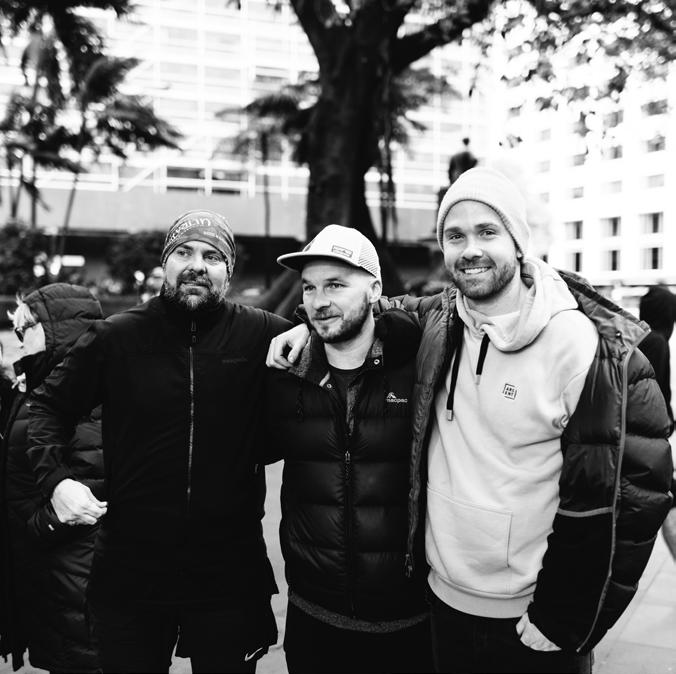
some of the people that meant the most to me, standing there waiting to celebrate – I felt so numb.
I did it though. 250km in 75 hours! And the money kept flowing – we were at $53k when I crossed that finish line.
I was overcome with emotion. The support I’d had over those three days from friends, family and strangers was like nothing I’d ever experienced and probably won’t again.
At the time of writing for Trail Run, we were at $62k, and I’d boldly set another goal
of $100k. And this is where my talented brother takes the reins. His goal was to make a film before he turned 35, and he’s done it. The Blood Run premiered to a sold-out crowd on the NSW Central Coast in December 2023. To do this with my brother was special and something I know I’ll cherish.
This was our adventure for those who were robbed of it.

INSIDER KNOWLEDGE:
Cal Gates is a runner from the Central Coast of NSW. He has a dad bod and loves pizza but enjoys hitting the bush, mountains and trails to push himself. Whether it’s running with his two kids, his mates or to raise money for charity –all running is good running.






In TRM50, I got a chance to review the high quality, high performance New Zealand brand Huntaway Run Co with their Ranger Trail Tee and reversible 3R Cap. And game was on like Donkey Kong, because this time around for TRM51, testing was done on their Foster 01 Trail Shorts, and they were sublime, sublime, sublime.
Like their trail tee, these shorts are designed and tested by not only their creators, Dr Inia Raumati and Dr Vicki Lim, but by trail runners in New Zealand who know what’s needed in a good pair of shorts.
I’m not necessarily a shorty shorts gal myself, but given these are unisex, the length on them is long enough for me to feel exceptionally comfortable. The draw string allowed me to tighten and loosen as I saw fit, but I didn’t really need to do it much as the branding is true to size once you measure up. But wait, I really need to let you know about the ‘pocketage’. Does that word even exist? I don’t care. I made it up. And I love it. Pocketage, defined as more than enough pockets to fit almost everything you need to take with you on the trails. The two front pockets on either side of the thighs are zippered – nothing unusual there, right? But the brilliant design effort here is that they are covered with that little bit more fabric than normal, giving a deeper feel to where the zipper is, almost making it look like the pockets have no zippers. Keeping my car key and bank cards safe in either of these pockets, as well as my Samsung S23+, I felt extremely comfortable that the zippers wouldn’t open on their own (I’ve had this happen before in the past with other brands!), and being a high quality zipper with a decent strong pull, that closure was not budging.

Sitting just behind these two zippered pockets, there’s an overflapped open pocket on each side allowing for the storing of gels or some lollies/ sweeteners or gum. The stretch at the entry way springs back and doesn’t elongate in time like a hair tie does.
And finally, in the back, right up near the waist band, is a rectangular shaped zippered pocket, again ideal for a key, bank cards, gels, lollies, and other small ticket items – or your phone (it definitely fit mine perfectly). I mean, shorts with 5 pockets in them?
Their beautiful Huntaway dog breed logo sits at the front on the left, and currently they come in Te Papa Green – a stunning dark foresty shade of green that is synonymous with New Zealand’s luscious environment.
Quickly onto the tech specs of the Foster 01 Trail Shorts. They have a 5in inseam and were released just last October (2023). They are made from a premium Japanese TORAY Primeflex fabric with 4-way stretch and are water and stain resistant.
Now, normally I don’t ever talk about what’s in my pants. Those are my little secrets…but today, I shall make the exception and let loose.
By now I’m sure you’ve all seen the ads on television and online for Step One undies, showcasing all the features that make the brand stand out from the rest, right?
Creator Greg Taylor started Step One from his home and his small office, now having evolved into a powerhouse that’s turned into a multi-million dollar empire with more than 1.5 million happy customers…not to get all techy, but it’s pretty impressive that within four years he’s started trading on the Australian Stock Exchange.
Initially started as a men’s brand, Step One has now broadened its horizons into a women’s range and includes not just the body short style but bikini briefs, full briefs and G-strings.
What makes Step One such a loved brand is the
fabric, and if you haven’t touched a pair yet I can honestly say you’re missing out. I was given the opportunity to test three pairs of their women’s body shorts, made from organic bamboo viscose that suits even the most sensitive skin.
With the breathable fabric, Step One has also featured an anti-chafe technology and a super soft waistband to provide maximum support. They took a little while to get used to, but in the end were uber comfortable and just a delight to wear. Step One is not a ‘brand first, product second’ kind of business – it’s the opposite. Product quality, comfortability and reliability is number one, then followed by brand.
Step One is a pretty fun brand too, so there’s always a great colour or theme to choose from; they do a lot of holiday patterns i.e. Christmas, Valentine’s Day, Halloween, and you can have a lot of fun shopping for them online (which are true to size also).

They are linerless, so make sure you keep yourself respectable down there, because if you make one wrong move…well, I’m sure I don’t have say anything more.
If you’re a trail runner who is comfortable not using a vest for runs up to 20km, these shorts are a hot item you need to seriously consider.
The Foster 01 Trail Shorts are made for the trails –or anywhere your dog takes you.
RRP Foster 01 Trail Shorts $129.00 NZD HUNTAWAYRUNCO.COM


VITALS
RRP Women’s Body Shorts $35.00 AUD
RRP Men’s Trunks $35.00 AUD
STEPONE.LIFE
Skratch labs is all about making and designing sports nutrition to help athletes perform better without offending the gut or tastebuds, and I’ve been converted already.
Always one to try something different, the lemon+lime super high carb sport drink mix was my fuel for the first (12.5km) lap of the True Blue (Australia Day) 50km Ultra held in Australind, Western Australia,, in January earlier this year.
It mixed easily with 500ml of water in my hand held, and was the perfect blend of flavour, hydration and nutrition, setting me up for a good race. I liked this so much that I’ve since purchased both flavours of the multi-serve bag, and will use this as part of my field strategy for an upcoming multi-day solo run.
The ingredients list is simple: cluster dextrin, fructose, cane sugar, raspberry juice, sodium citrate, citric acid and malic acid for the raspberry flavour mix, and lemon oil, lime oil, lemon juice and lime juice in place of the cane sugar and raspberry for the lemon+lime mix. The cluster dextrin is described as a highly-complex carbohydrate that digests easily and steadily, and that was certainly
my experience when using this product. Supplied as a single-serve packet, providing 200cal, 50g of carbs and 200mg sodium when mixed with 500-600ml of water, the skratch labs super-high carb sport drink mix is both gluten and dairy free, and vegan. Formerly marketed as ‘superfuel drink mix’ this is a new name, but the same fuel.


I also had a go at testing the sour cherry energy chews with caffeine. Containing 160cal in a 50g packet, skratch labs’ energy chews can be described as a candy gumdrop made of sugar and pectin, with a side of caffeine!
The sour cherry flavour is exactly what you’d expect: on the first bite there’s a sharpness from the flavour which gets your saliva flowing. A slight bitterness follows from the caffeine, and has you questioning your choices for a moment or two. But as soon as you’re done with them, you want more, and more, and more!
My initial mouthful was just a couple of the bites, but a few minutes later I was craving more…eating three/four at a time. I found the energy chews digested easily, and the caffeine boost was welcome - I had them on the final lap (four) of the True Blue
If you’re in the market for race fuel that’s clean, look no further than PURE Sports Nutrition because this is the quality your body’s been screaming for.
Right off the bat, the brand markets itself as without artificial ingredients or colours, and being trail runners that’s super enticing. Even better, it’s developed and produced in New Zealand using the highest quality natural ingredients, with the creators (Simon Kraak and Marewa Sutherland) knowing firsthand the importance of using the right fuel to support training and racing – they’re athletes themselves.
They’ve got some pretty amazing athletes under their name too, including golfer Caitlin Cotterill, track cyclist Sami Donnelly, rally driver Emma Gilmour, hockey player Rose Tynan, mountain biker Laura Goldsworthy, endurance runner Eddie Dawkins, the Hurricanes Rugby Union team plus a whole barrage more of incredible sports superstars.
And now onto the product we tested.
Featuring 380cal, 90g of carbs and 650mg of sodium per serving, the PURE Performance + Race Fuel is a powerful sports nutrition drink. The neutral non-flavour and high level of carbohydrates and electrolytes make this suitable as the sole source of energy for those seeking a simple nutrition strategy, or can be used to top up energy and electrolytes every hour or two into a long run.
With no added colours or preservatives, this is

a dairy and gluten free, vegan friendly sports supplement.
I’ve used it on a few occasions, once during the opening minutes of a 100 miler and the second time prior to a mountain climb. Both times, I mixed one serving with 700ml of water and consumed it over the course of under five minutes. Having such a neutral ‘non flavour’ taste meant it went down as easily as plain water, and it sat extremely well in my stomach. I definitely felt the benefits over the opening hour of both efforts, and it set me up for a great day on the trails.
Available in a single-serve sachet (98g) or a 700g pouch, the PURE Performance + Race Fuel is
50km Ultra, and they were exactly that I needed to finish this race.
The ingredient list is simple here too: sugar, glucose syrup, water, pectin, cherry powder, citric acid, lactic acid and green tea extract. The chews are gluten and dairy free, and suitable for vegans.
VITALS
RRP super high carb sport drink (lemon+lime, raspberry) 53g Packet $3.25 AUD
RRP super high carb sport drink (lemon+lime, raspberry) 840g Bag $41.95 AUD
RRP energy chews (raspberry, sour cherry, orange, lemon+green tea) 50g $2.45 AUD

manufactured in New Zealand as mentioned earlier, and is Human and Supplement Testing Australia (HASTA) certified.
HASTA is Australia’s first commercial product testing organisation, testing for WADA banned substances, which means this is one of the few supplements you can trust, off the shelf, to have been tested for more than 200 WADA prohibited substances.
VITALS
RRP PURE Performance + Race Fuel 700g $65.99 AUD / RRP PURE Performance + Race Fuel 98g $9.99 AUD / PURESPORTSNUTRITION.COM
Every little thing counts when you’re out running, and that includes the socks you protect your feet with.
Good…no, in fact great socks can make all the difference when you’re out there slogging it on complex and technical trails. Yes, shoes are also a deciding factor and that’s what most people tend to focus on, however socks are there to prevent blisters, reduce fatigue and protect the skin by reducing friction and helping keep your feet dry from either sweat or outside factors like mud and water.
I was given the opportunity to test run two pairs of the Bridgedale brand – well known for keeping toes warm and comfortable direct from the vast and glorious outdoors that is Northern Ireland since the early 1980s – and they didn’t disappoint. Because the company continually invests in the latest knitting and finishing machinery, it enables them to develop new designs and constantly improve performance.
First off was testing the Men’s Ultra Light T2 Coolmax Sport Lows (in red, mind you, to go faster) which straight away gave me a comfortable fit and very noticeable cushioning thanks to resilient padding. It’s so great to see products like this being vegan friendly, and this particular sock

is made of a non-wool fabric (built on a structure on LYCRA and set by Bridgedale’s Thermo Fit processes to ensure it always returns to its original shape). Despite the elasticity of the said fabrics, they never felt restrictive or uncomfortable, and have found the moisture-wicking technology to live up to the hype.
The Lows are a sports fit, sitting just above the ankle bone, and have a flat toe seam that didn’t bother me in the slightest – in fact, my toes could splay out in the socks’ natural toe box.
The other pair I got an opportunity to test were the Men’s Lightweight T2 Merino Sport ¾ Crews (in gunmetal), which have a different fabric type – a combination of merino and lycra makes these socks feel very soft, and yet they conform well to your foot shape. I found there was no falling down or bunching up with the crew length, and I wore them comfortably all day.
The lycra ensured that no dirt or small rocks found their way in from the top, and after several washes, the socks still felt soft while holding their original form. Like with the Coolmax Sport Lows, the Merino Sport ¾ Crews have ventilation, resilient padding, odour control and insane durability for trail running. This pair was light, cool and very breathable – it was a shame to take them off before

bed, to be honest.
Both the Men’s Ultra Light T2 Coolmax Sport Lows and the Men’s Lightweight T2 Merino Sport ¾ Crews are a part of Bridgedale’s Trail Run range, which amazingly enough have actually been tested by trail runners over a two-year period. When in development, Bridgedale met and worked closely with a team of enthusiastic trail runners in the Lake District UK to better understand trail running and a trail runner’s needs.
They know what we want, and they know how to make it.
The Men’s Ultra Light T2 Coolmax Sport Lows are available in Yellow, Blue, Navy and Red whilst the Women’s come in Purple, Pink and Blue; the Men’s Lightweight T2 Merino Sport ¾ Crews are available in Black, Blue, Red and Gunmetal, and for the Women they come in Teal, Damsen and Charcoal/ Purple.
RRP Ultra Light T2 Coolmax Sport Lows $35.99 AUD
RRP Lightweight T2 Merino Sport ¾ Crews $37.99 AUD
AVAILABLE AT ALL GOOD INDEPENDENT OUTDOOR RETAILERS AND RUNNING SHOPS
If you still haven’t found the perfect all-rounder shorts, ladies…it might be time to stop looking.
Live and Breathe is the next generation of Catfish Apparel, so they aren’t new to the activewear world. With strong ties to the sport of triathlon, this new iteration of the business is (excitingly) becoming a strong contender in running apparel with their expanding range but still in keeping with their core values and flare for beautiful prints.
LAB operate out of Sydney’s northern beaches and constantly demonstrate how important their sporting community is to them. You’ll frequently find the team, led by co-owner and head of marketing Lana Threlfall, on the sidelines of events dishing out free high fives with Super Mario Bros Power Up-style energy levels and enthusiasm to keep your spirits high on course!
They genuinely love what they do, and this shows in the time and care they’ve taken to rebrand as Live and Breathe Active.
The team sent me two of their mid-thigh seamless shorts to try out, and personally I was excited that

one of them was plain black. I’ve always been a little afraid of ‘loud’ shorts so tend to steer away from them, but when I saw the new patterns on the second pair I can genuinely say I was excited because the print is beautiful.
Their new prints have been designed by Australian based artists; the Australiana short is designed by Brisbane-based artist Dominique Collins of Stixylin. So, the shorts…drumroll please.
THERE’S NO FRONT SEAM!
It’s revolutionary. So simple, and now I don’t think I can buy another pair of shorts that don’t have a front seam.
The Australiana shorts are made with LAB’s signature swim to run performance lycra fabric (nothing like a fabric that can deal with moisture and not rub or irritate when you’re on the move!) I put these shorts on and I didn’t have to adjust any part of them – not even once on my long run. No tugging or pulling to remove front wedgies or stop them riding up my legs, no hiking them up at the back or fiddling with waistlines. Not once.
Camel Toe’O’Meter: Zero.
The inseam is 7.5in so they sit nicely around my mid-thigh (I’m 159cm on a good day) and the waistband sits just at my belly button, so they are a great high waisted option for those of us who like a little more support. I ran in these shorts in direct sun, heat, cool summer weather as well as rain, and had zero issues, chafe or discomfort.
LAB has kept it simple with just two side pockets, an excellent fit and beautiful print. I’m sold.
The black shorts are advertised as more of an active lifestyle short, or as the perfect option for low impact exercise like yoga or pilates, but I still had to take them out for a test run, literally. These shorts have an extra high, super soft waistband, same seamless front and 7.5in in-seam. Again, passed the camel toe test with flying colours.
It’s a different fabric to the run shorts, a soft touch lycra that has loads of stretch. As with the Australiana shorts, when I ran in these I didn’t touch them once to readjust and they felt ridiculously comfortable the whole time. As they sit higher up on my waist (a good couple of inches above my belly button - again, I’m short) they actually sit under a hydration pack really well and so I think if you’re prone to chafe around the bottom of your pack, these could be a really great solution for you!
I wore an XS in both shorts and if you asked me if I would buy these again? Absolutely. I might even be a printed shorts convert!
Would I wear these for my next ultra? Happily, and with confidence that I wouldn’t have to touch them for the entire run.
VITALS
RRP Australiana Seamless Mid-Thigh Shorts $90.00 AUD
RRP High Waist Seamless Mid-Thigh Shorts (Black) $75.00 AUD
LIVEANDBREATHEACTIVE.COM

















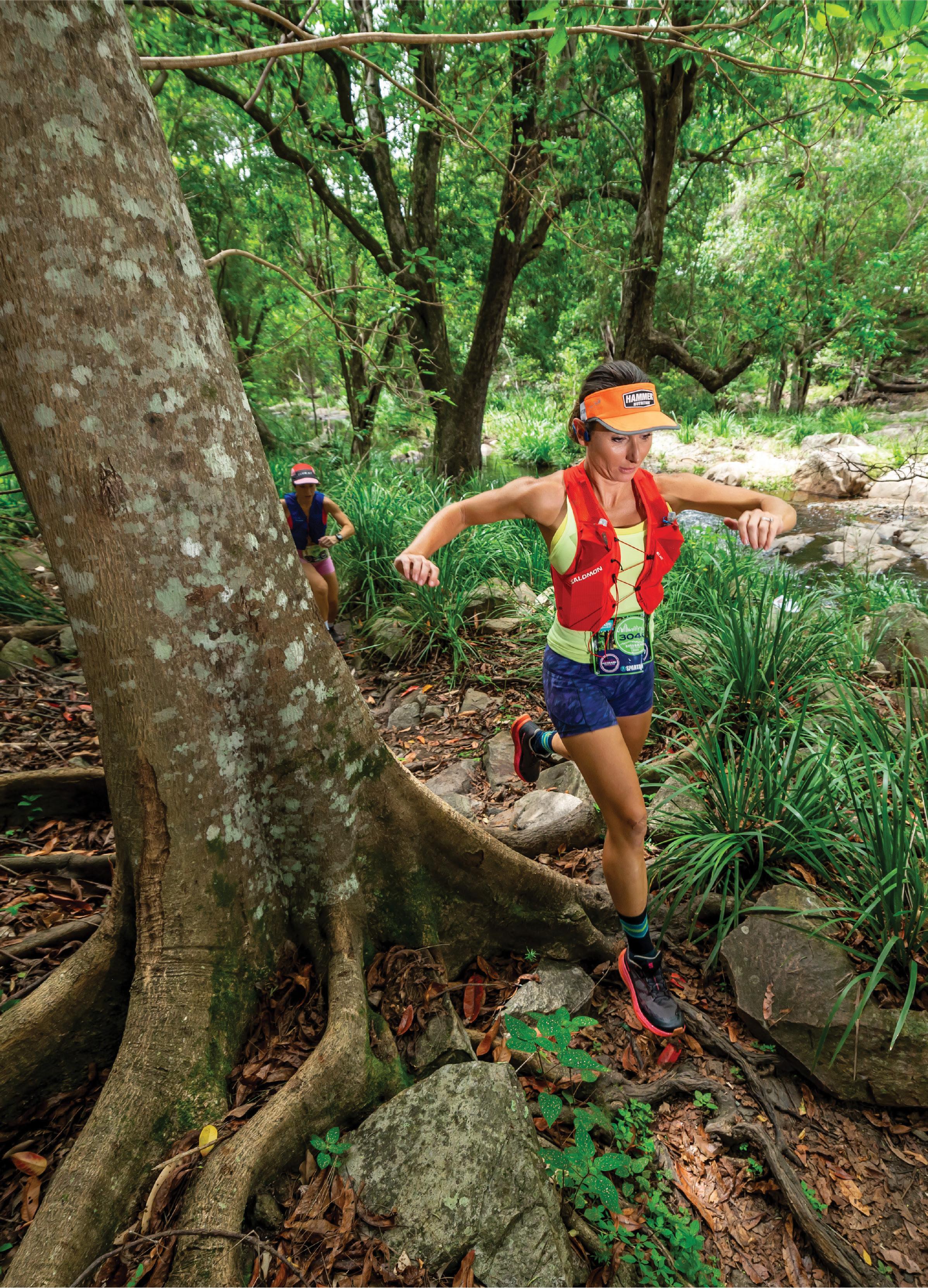



 REVIEW BY ALEXIS OOSTERHOFF | PHOTOGRAPHY BY JO OOSTERHOFF
REVIEW BY ALEXIS OOSTERHOFF | PHOTOGRAPHY BY JO OOSTERHOFF

The Kjerag is advertised as a max performance, extreme grip trail running shoe, so firstly, let’s get onto the tech specs of this new brand by athlete extraordinaire Kilian Jornet.
Designed with versatility in mind, the Kjerag was also created for durability in a bid for runners to get more than 1000km out them. However one of most notable features is the shoe being designed with minimalist appearance to ensure an increased chance of recycling pieces – or repairing them.
The Kjerag features a 6mm heel to toe drop, stack height of 23.5mm at the heel
and Vibram Litebase MegaGrip outsole with extended heel to toe protection. The upper is made from MATRYX® Jacquard, a new performance-sports fabric weaved from individually coated polyamide and Kevlar yarns designed to be breathable, flexible and extremely comfortable.
Because of the symmetry of the sole and the shape of the midsole, not much more enforcement is needed because the Kevlar keeps protection at a premium.
In line with keeping things simple, the tongue is thin and wraps around the upper foot comfortably, and the mid sole is made from low-density foam, providing extra protection and shock absorption.
The 3.5mm lugs on the tread are deep, and come highly recommended to go from wet or snow to rocks, but as trail runners love to go every surface they can find, the Kjerags are also great on singletrack, dirt or soil and gravel. Each lug’s design has been well thought out, shaped for grip and stability to ensure a confident fast run.
My initial observations on unboxing were that the shoes are lightweight (235g each, for Men’s 10.5), quite narrow in the mid-section with a thin upper fabric and tongue, a decent amount of foam cushioning, but lacking a second uppereyelet to support heel lock lacing.


Despite this, they slipped onto my feet easily, and upon lacing them up my feet felt very snug. There was a nice gap between my front toe and the top of the shoe for me, though these shoes would not suit those needing a wide toe box.
I gave the Kjerag shoes their first tryout at Mundy parkrun, Western Australia’s gnarliest with over 200m of rolling gravel and rocky trails. I was only a week out from completing a 100 mile trail race, with my legs and feet not necessarily in the best shape for a tough run.
At the start, I felt like I was wearing racing shoes, and was quickly off and climbing the first hill, toeing my way up the gravel slope. There was certainly plenty of grip on offer from the Vibram outsoles (which feature those insane 3.5mm lugs) yet I could feel each lump and bump. Despite the outsoles being stiff, they provided a lot of feedback.
Compared to my usual go-to shoes (which feature 5mm Vibram Megagrip lugs), I felt just as secure in the Kjerag’s on the slippery and rocky downhill sections. I finished parkrun thinking these would make excellent short-distance racing
shoes, but was unsure how they’d feel over the longer efforts.
A few weekends later, I wore them for a full day, hiking a couple of mountains in WA’s Stirling Ranges and driving around the countryside for many hours. At no point did the shoes feel uncomfortable, which is a real positive, and I didn’t need to adjust (or re-tie) the laces at any stage during the day.
Their grip going up and down Bluff Knoll and Mt Hassell was excellent – the latter climb requiring a fair bit of rock hopping, and I felt extremely confident in the Vibram lugs on the smooth rock surfaces. While I can be more of a heel-runner, the slight rocker on these shoes encouraged me more towards toe running, which I think is always a positive!
In terms of colours, the Kjerag is available in green, grey, black, grey/green and beige for both men and women.
These will be my go-to shoes for short, fast, trail runs, probably up to 50km in length, and it’ll be interesting to see how my feet respond over time.


GREAT FOR: All technicality, all terrain
NOT SO GREAT FOR: Flat pavement, cement
TEST CONDITIONS: Single track, crushed gravel, pea gravel, rocky mountains
TESTER: Alexis Oosterhoff
TESTER MECHANICS: Slight overpronator
VITALS
RRP: $320.00 AUD
WEBSITE: nnormal.com
CONDITIONS: Shoes (Black) provided for testing by Nnormal





TOURING AUSTRALIA & NEW ZEALAND FROM JULY 2024
SCAN THE QR CODE FOR TICKETS AND INFO
RUNNATIONFILMFESTIVAL.COM
PHOTO BY MARK WATSON
This year, 2024, marks 10 years of the RunNation Film Festival! It’s an original and inspiring event festival attended by running celebrities as well as thousands of runners and non-runners from across Australia, New Zealand and other parts of the world. With film submissions from Australia and across the globe, we curate them into an incredible two-hour screening.
But the RunNation Film Festival is not just about running. It’s about celebrating the human spirit, using the incredible sport as a storytelling medium.
Touring Australia & New Zealand from July 2024

Film Maker: David Byrne
Featuring The North Face athletes
David Byrne and Blake Hose, Footprints explores the unique terrain of Ningaloo in Western Australia as the runners undertake a 3-day journey, covering 192km from Exmouth, along the west coast and back across the heart of the Cape Range, battling wind, heat and wild landscapes.

Film Maker: Alex Harris-MacDuff
Prominent Cast: John McAvoy
Locations: UK and France, Switzerland, Italy (UTMB race)
12 young athletes are changing the world, defying the odds and showing that nothing is impossible. Only 43% of young people in inner cities complete the weekly recommendation of physical activity. By 2027 the Alpine Run Project with John McAvoy, Nike, JD Sports and YBB will help 100,000 young people from diverse backgrounds in cities across Europe take part in trail running. This documentary captures their emotive and powerful journey to inspire change.

Film Maker: William Corlett
18-year-old Aussie Larrikin, William Corlett, takes on a colossal challenge. To run 200km in 24hrs, the length of Tasmania! Running from Launceston to Hobart driven to raise $200,000 for Lifeline Australia. Raising awareness for the crisis support service. With relentless support from his 3 red P Plate wielding mates, they embark on a mission self determined IMPOSSIBLE. Project Impossible is a heart pounding story, showcasing the spirit of young Australians, the power of comradery, & the limitless potential of human determination.
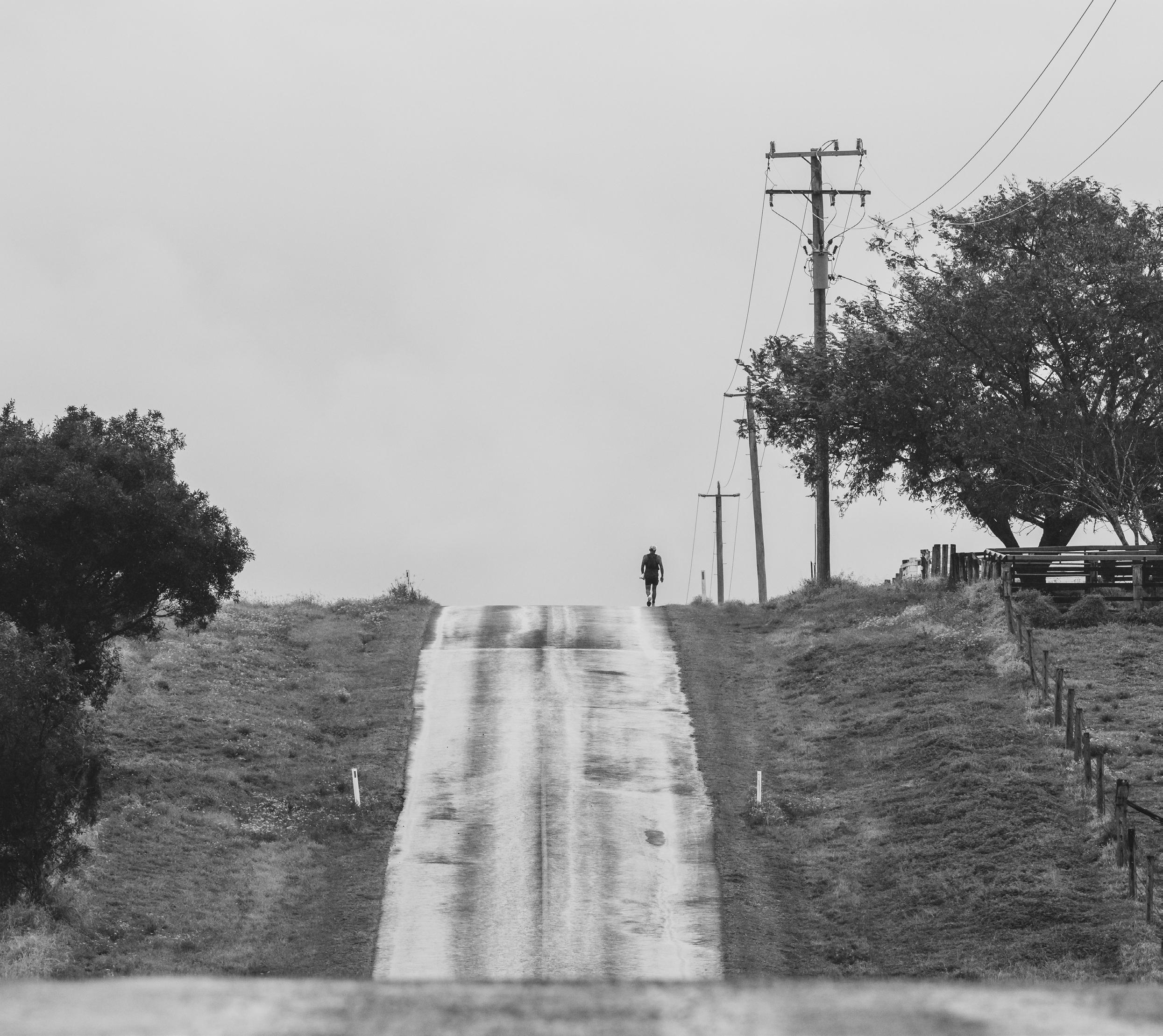
Brad Glover was the Scenic Rim Ultra race leader at the time and at about the 60km mark, he decided that he didn’t have a good enough reason as to why he wanted to continue. He kept telling me ‘I don’t have my why anymore’ and said the same thing to his wife on the phone as he walked off in the direction he’d just come in.
This image captures Glover, his back to the camera, returning to the previous checkpoint to officially withdraw.
Moments earlier, Glover crossed paths with the runner who was in second place and they briefly spoke, Glover saying he wasn’t in the right headspace. He wished the runner luck for the hardest section of the course.
Camera Specs
Canon EOS R5 with RF 70-200 f/2.8 @ 200mm, f/7.1, 1/1250 ISO 800

SPIN PLANET introduces a new sustainability concept into the Trail Running footwear category. Perfect for long distance runs, with protective cushioning and instant comfort.

